Global Sport





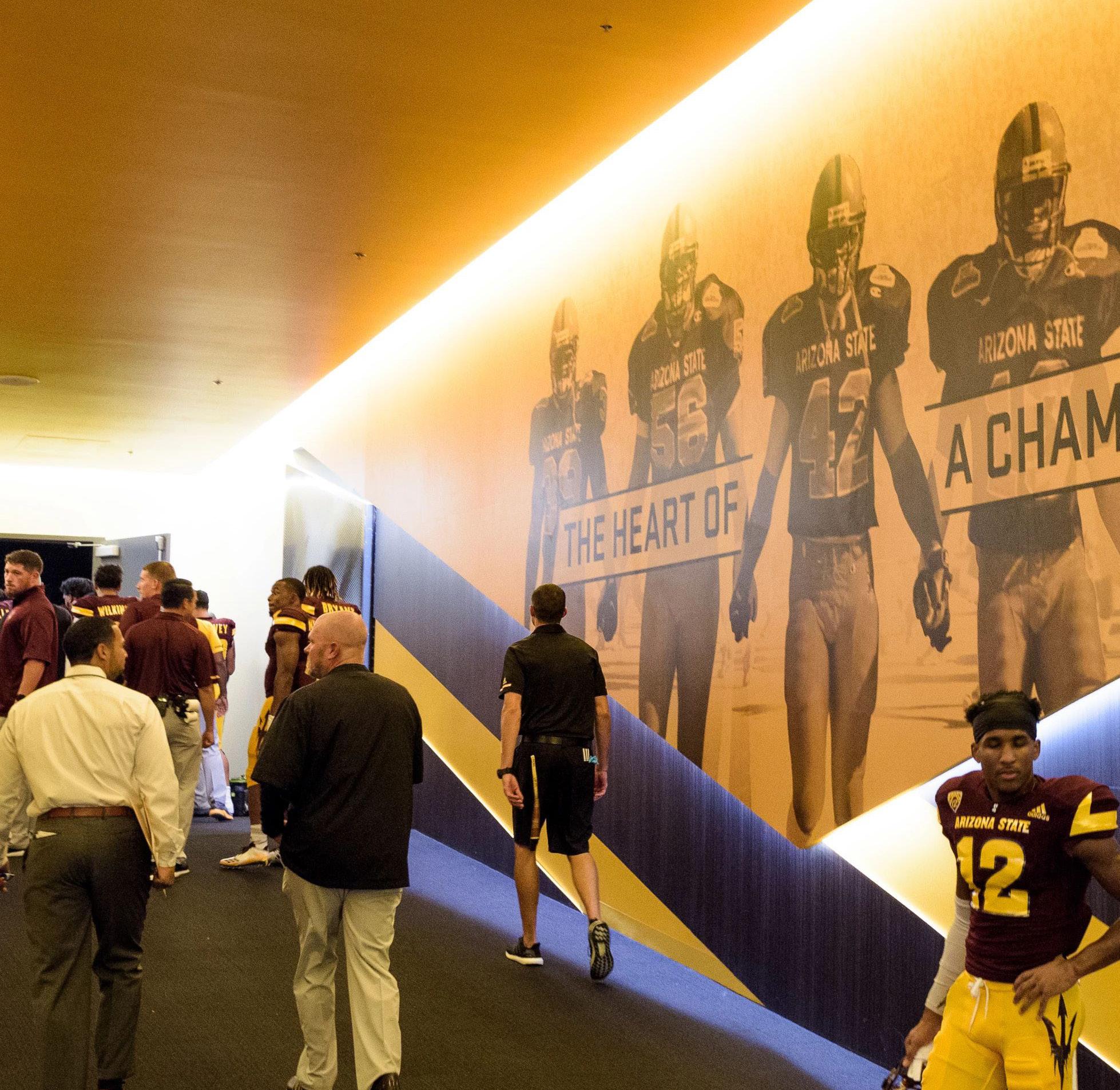
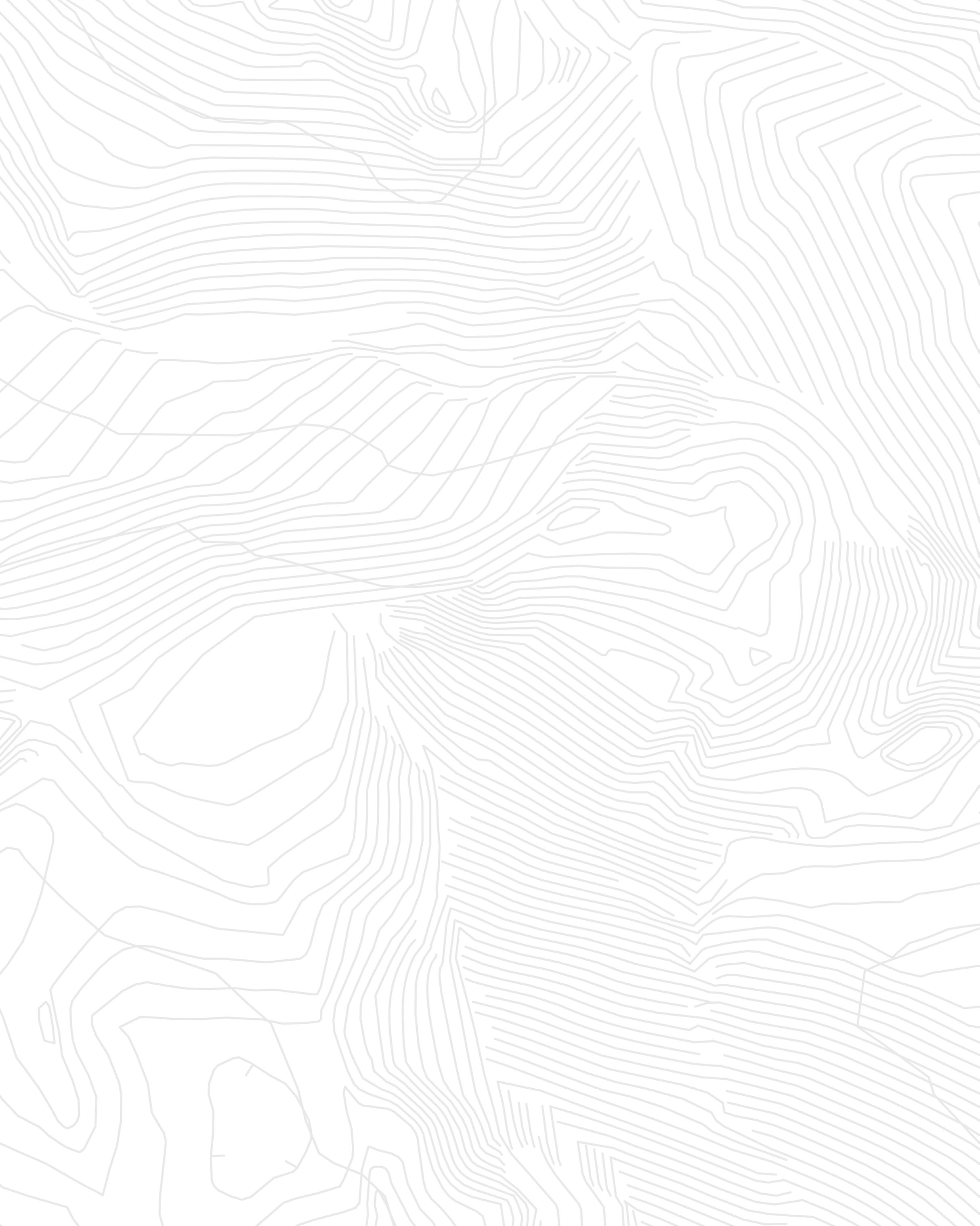
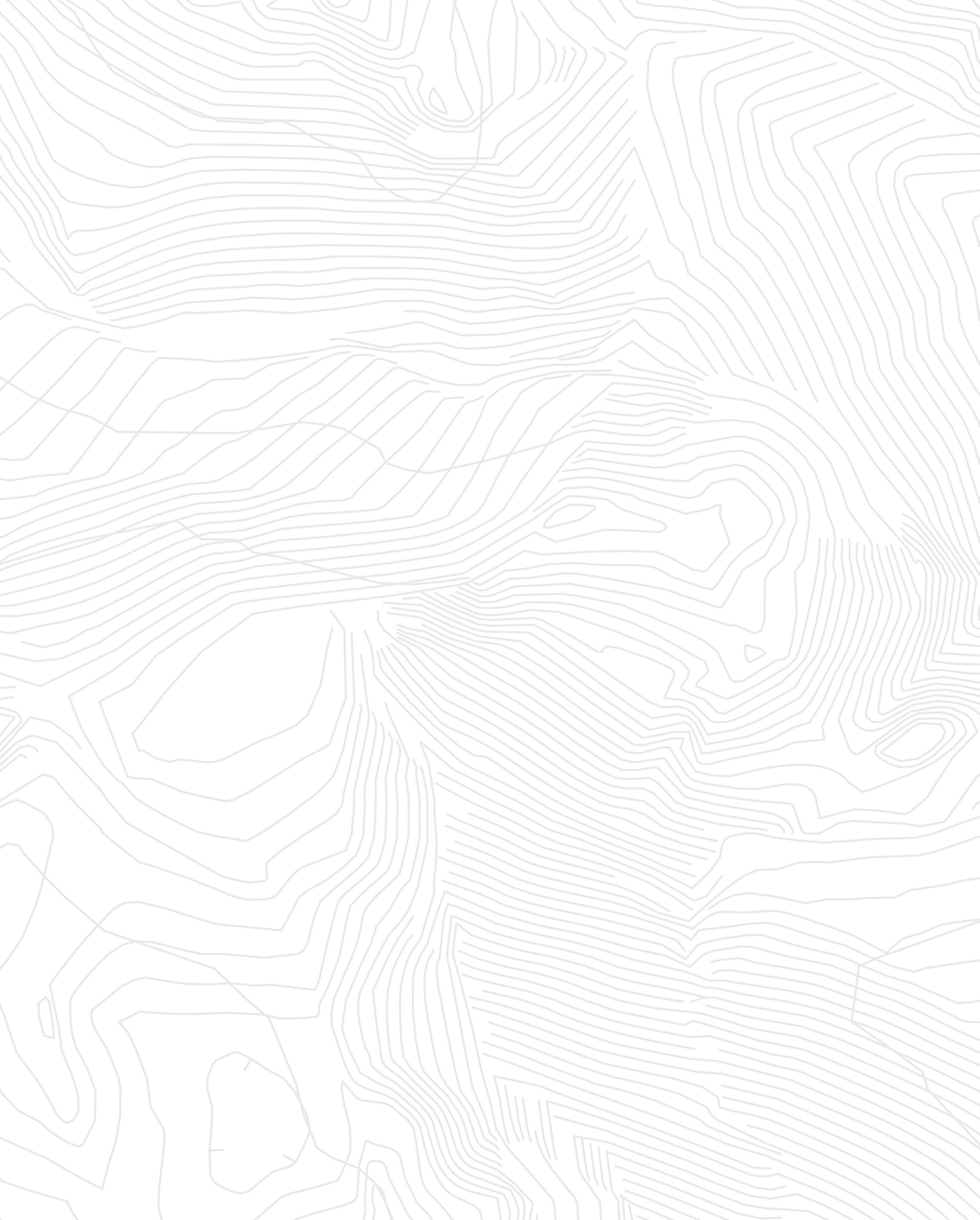
The Global Sport Institute is where diverse disciplines converge in thoughtful ex amination of critical issues impacting sport. As a cross-disciplinary enterprise, the institute’s efforts are integrated throughout the entire university rather than within a single concentration.
With an emphasis on expanding research, sharing knowledge, supporting innovation and advancing education, the institute’s mission is to use sport to create positive change throughout the world.
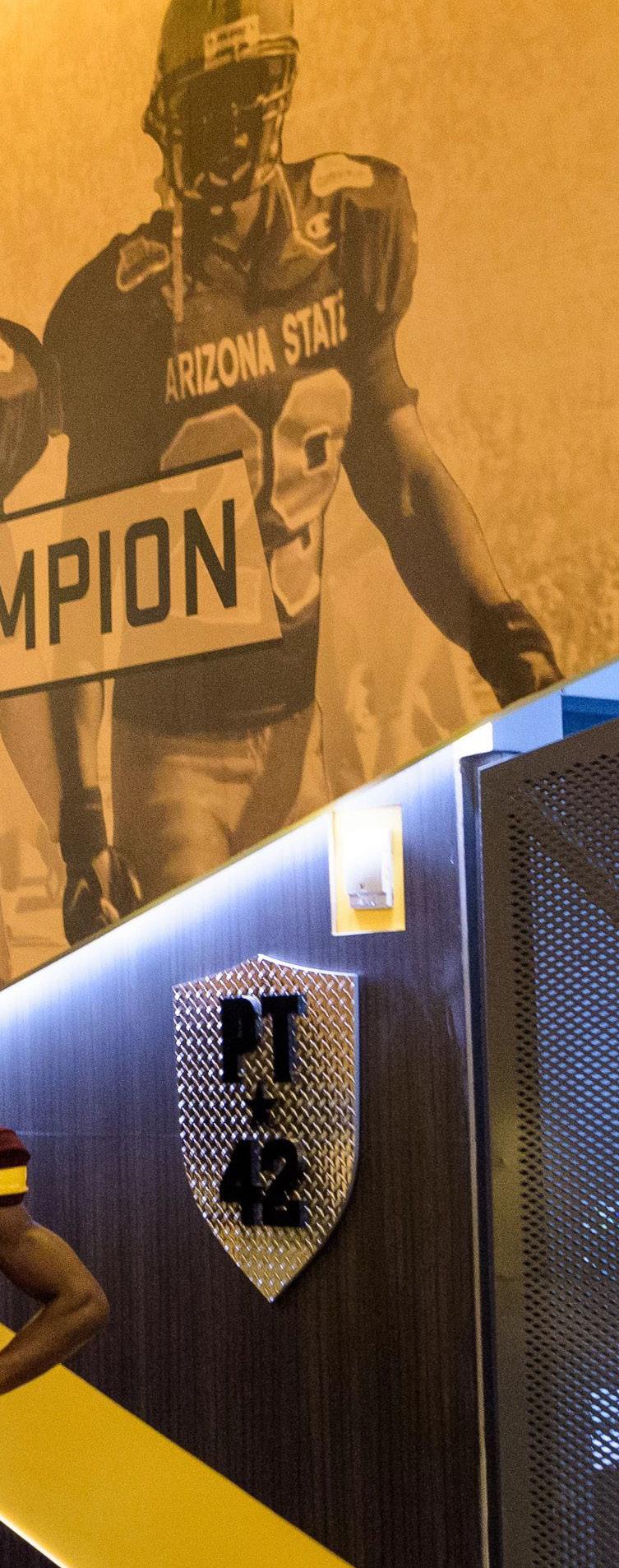


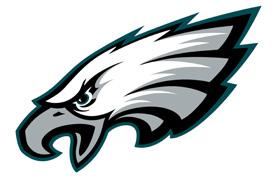
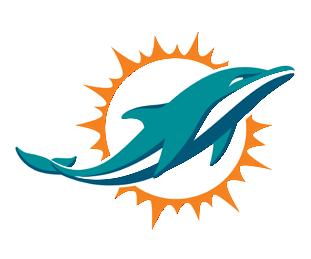
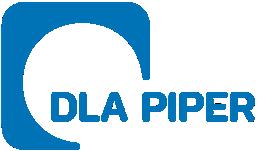
The Global Sport Institute is proud to collaborate across disciplines, from networks within and outside of Arizona St ate University. Below are those we’ve engaged with through our innovation and education programs.
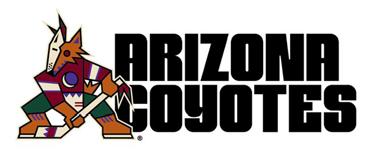
Special thanks to Arctos Sports Partners and Morgan St anley for their support of the Global Sport Institute’s work overall.


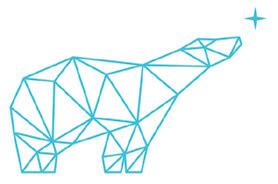
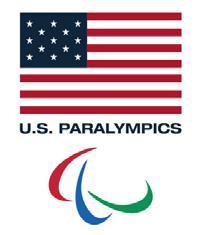
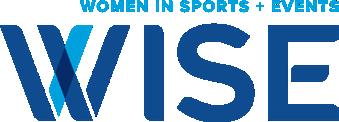
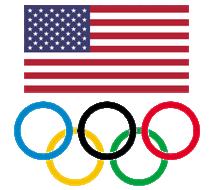
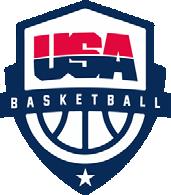
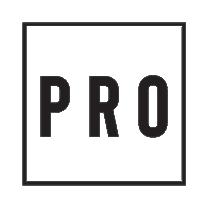
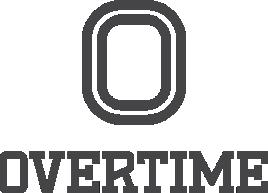

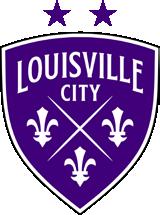
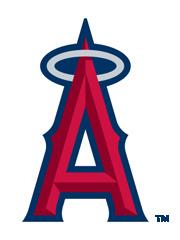
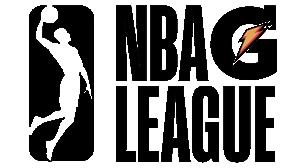
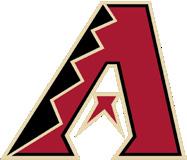
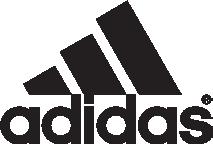

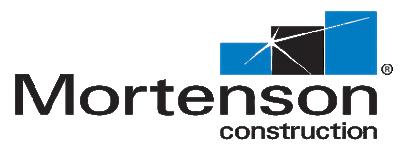

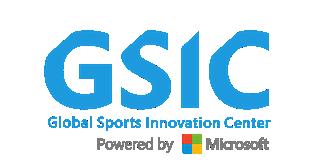
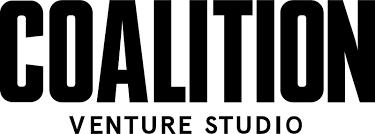
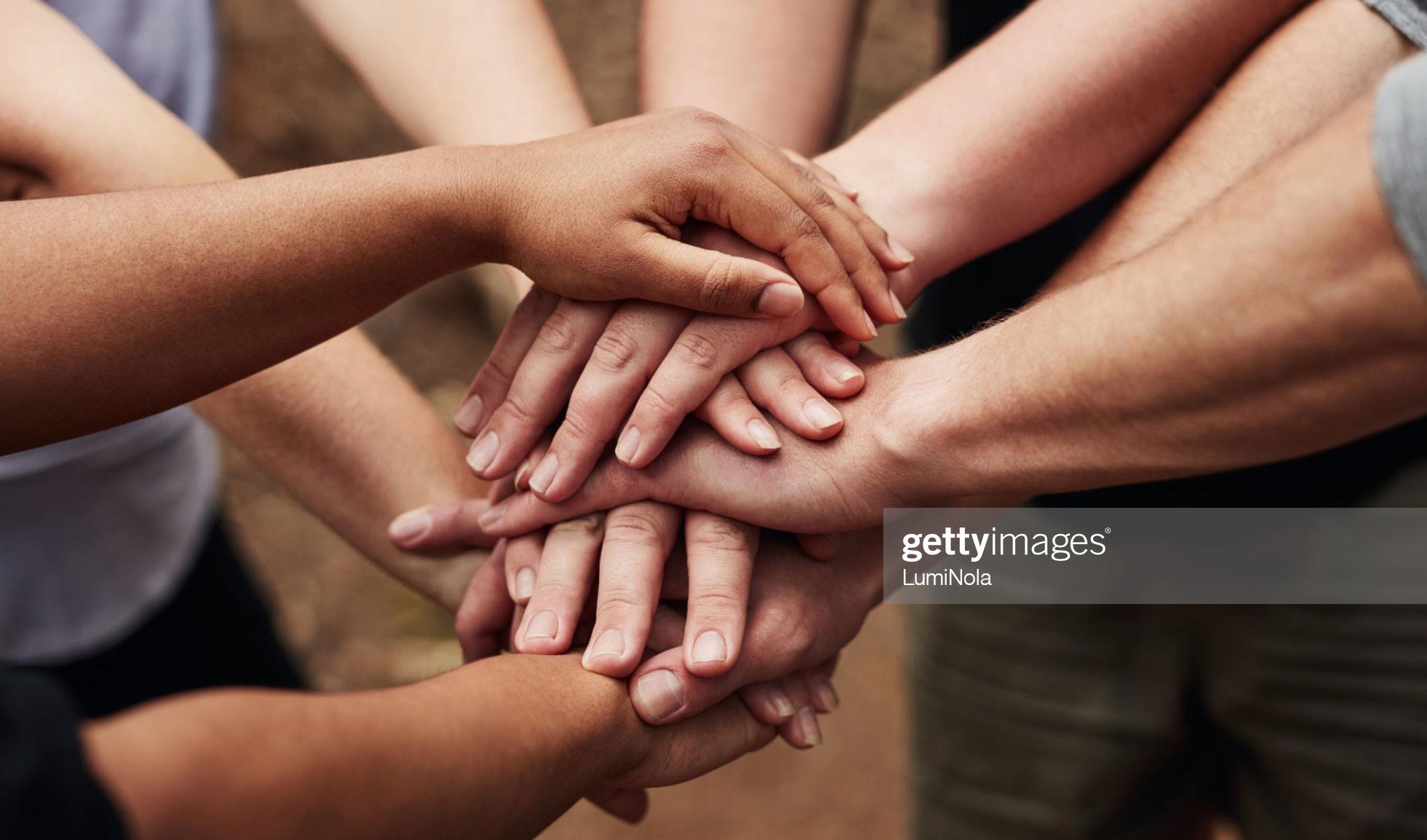

For the past five years, I have had the great honor of serving as CE O of the Global Sport Institute. Our unifying mission from the very st art was to make sport better, to make the people in and around sport better, and to make the world better as a result.
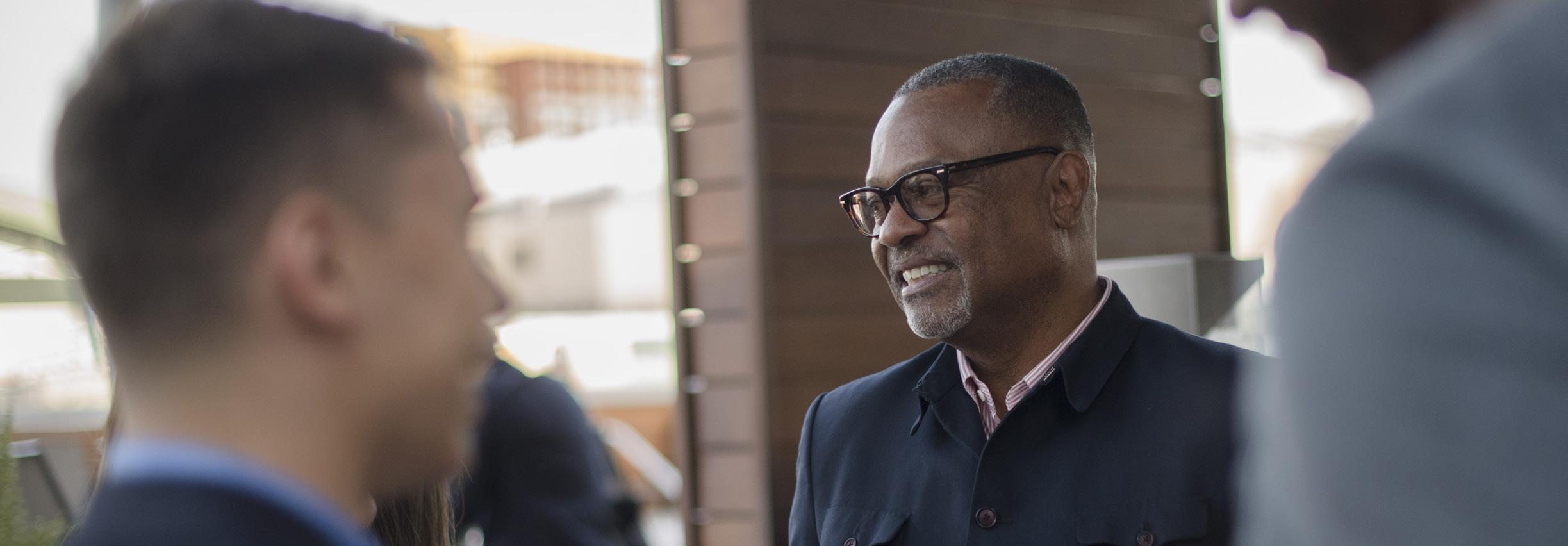
I depart with a feeling of mission accomplished. The ship is launched and all that we desired to do to achieve that lofty mission in the beginning is now in place or achievable. This brings me great s atisfaction. The greatest s atisfaction will come with the test of time. I am optimistic that the widely-proclaimed “most innovative university” will continue this Institute as an enterprise at the forefront of academic innovation, as well as one that is seeking to make sport, people and the world better.
As I was packing up my office at Sun Devil St adium, I came across several reminders of the great work our team has shared and supported over the past five years. A photo of John Carlos and Wyomius Tyus as they revisited Est adio Olímpico Universit ario, the site of the 19 6 8 Olympics in Mexico City, reminded me of the progress we’ve made in listening to women’s voices when they join in protest against racial injustice. A photo of Billy Mills, then another of Amanda Blackhorse, reminded me that after years and years of battles, both the Cleveland M LB team and the
Washington N F L team have removed nicknames and logos that are offensive to Native Americans. Yet another photo was of our Sun Devils Athletics venture challenge winner, Maya McClendon, whose innovative app aims to reduce death by suicide within student-athlete populations.
I know that the work will continue in my absence, and I encourage you all to continue following this amazing organization. I cert ainly will, and I will continue to participate where the outst anding leadership deems appropriate.
Kenneth L. Shropshire Chief Executive Officer, Global Sport Institute and adidas Distinguished Professor of Global Sport“ By creating a platform where innovative ideas, scholarly insights and tough conversations could be shared, my hope is that we created space for sport to take the necessar y steps for ward.”
I met Ken in 2000, while pursuing my PhD in sociology at the University of Pennsylvania. I had read his book, In Black and White: Race and Sports in America, and immediately emailed to ask if I could assist him with research. He agreed, and our partnership began. Twenty years later, I have the privilege of following in his footsteps leading the Global Sport Institute.
As Ken wrote, “the ship is launched,” and we have a great team that will continue the mission. In our first five years as the Institute, we have launched and landed on each of our t arget areas: entrepreneurship, research, outreach and education, and multimedia. We are a convenor of a variety of st akeholders through summits, roundt able discussions, pitch competitions, and learning programs. Our future will grow from this foundation and focus on expanding our educational offerings, broadening our coverage of the impact of sport across the globe, with a particular emphasis on youth. To do so, we will deepen our partnerships, at AS U, adidas and throughout the world.
Different from five years ago, the world has been strained by political, social and economic upheaval that challenge our access to and relationship with sport. We recognize the seriousness of these issues and see how sport has been impacted. But more import antly, we, at AS U and the Global Sport Institute, embrace the power of sport globally to address challenges and make a positive impact.
“Our future will grow from this foundation and focus on expanding our educational of ferings, broadening our coverage of the impact of spor t across the globe, with a par ticular emphasis on youth. To do so, we will deepen our par tnerships, at ASU, adidas and throughout the world.”
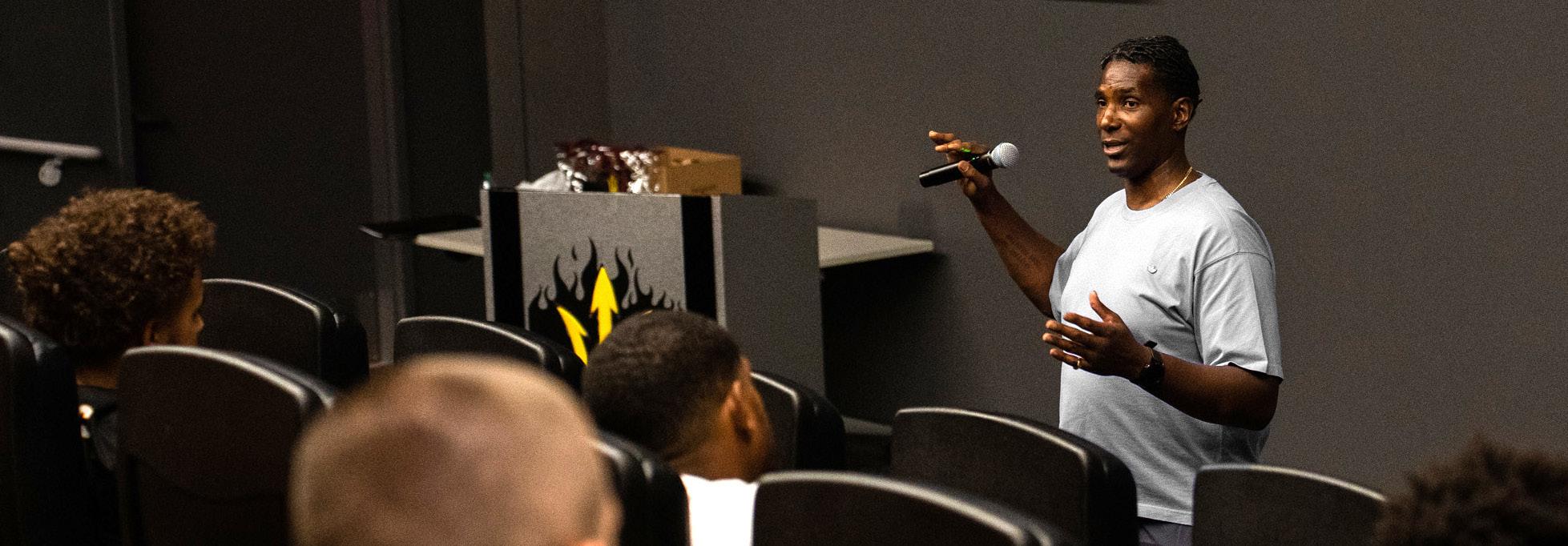 Scott N. Brooks, PhD Incoming Director Global Sport Institute
Scott N. Brooks, PhD Incoming Director Global Sport Institute
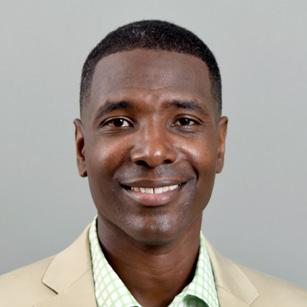

As one of the biggest sports leagues on Earth, the National Football League’s hiring practices matter They set a precedent not only in the United St ates, but also across the world. So when former Miami Dolphins head coach Brian Flores sued the league alleging racial discrimination, it sent unprecedented waves across sport.
The N F L, a league that was 5 8% Black as of 2021, has never achieved real equity among aspiring coaches and executives of Color, but Flores’ suit was a shot across the bow that the league had never seen. It was the type of move onlookers and activists alike had imagined could create change, building a legal case around the slim opportunities, shorter careers and backroom hiring that had long plagued leaders of color in football.
Increasing access to sport is fundament al to the mission of the Global Sport Institute, and much of the Institute’s work over its first five years has centered on underst anding the dat a behind who gets hired into sports leadership. That put the Institute in a unique position to tell the story of Black men like Flores. Just weeks prior, the Institute had updated its yearslong N F L field study dat a to account for minor strides in diversity among league coaches. Journalist Shalise Manza Young wrote a corresponding article at Global Sport Matters, the digit al magazine published by the Institute.
Writers at outlets such as The Wall Street Journal cited the Institute’s dat a while covering the lawsuit.
In an ess ay at Global Sport Matters, CE O Kenneth Shropshire wrote “the requested remedies in Flores’ suit, while helpful, cannot bring about true equity. No court ruling or legislation can. Not by themselves ”
On Februar y 1st , 2022 , Brian Flores, former head coach of the Miami Dolphins, filed a class action lawsuit against the NFL and all 32 teams alleging racial discrimination in the hiring process.

Later, the N F L announced an investigation into Dolphins managing general partner Stephen Ross, whom Flores alleges offered him money to lose games, and multiple other coaches signed onto Flores’ suit with similar allegations. Meanwhile, diversity advocates and longtime N F L voices openly questioned the Rooney Rule, which was created as a form of affirmative action designed to give racial minority candidates more opportunities.
“There’s no reason to expect we’re going to have a different outcome next year without those kinds of changes and we’ve already begun engaging in those changes,” N F L Commissioner Roger Goodell told reporters at the Super B owl.
Watch the full video at bit.ly/GSM Podc astBrianFlores
After Flores filed his suit, the Institute provided its N F L field study dat a to news publications like Bloomberg and the Miami Herald, while C E O Kenneth L. Shropshire and Director of Research Scott N. Brooks, PhD were interviewed by multiple national news outlets.
The Institute convened multiple podcast convers ations on the specifics of the class action suit as well as what it might mean for the future of the N F L and sport more broadly. As leading journalists and industry experts convened for a Global Sport Matters Live virtual panel earlier in the winter, former United Football League commissioner Michael Huyghue noted, “There should be some represent ative reflection of the workforce… the pipeline isn’t, I don’t think, full enough yet ”
No matter what form the Rooney Rule t akes or whether it exists at all going forward, the N F L’s approach to diversity will always be a force in the industry. The Institute is well positioned to det ail the factors that contribute to the league’s diversity troubles and provide insight into how change can come in the future.
The root question of our Field Studies series asks: What paths are t aken to achieve the highest levels of sports leadership and should those pathways be re-evaluated?
The research t akes a deeper dive into the racial, ethnic and gender diversity among the highest ranks in several leagues and sports, or more often than not, the lack thereof.
This year, we expanded our series to include hiring criteria and career pathways with two new studies: M LB Manager Hiring Criteria and Career Pathways from 2010-19 and N CAA Women’s B asketball Head Coach Hires at H B C Us and Power Five Schools from 198 4-2020.
In our study of M LB managers, we built upon the groundbreaking study from Edward Rimer that ex amined baseball hiring trends from 1975 through 19 9 4 and found different attributes were sought among Black, Hispanic, and White managers. Dat a collected from 2010 through 2019 showed findings similar to Rimer ’s study and, in addition, revealed that within the 10-season window there was a decrease in managers of Color and an increase of White managers.
As 2022 marked the 5 0th annivers ary of Title I X, we sought to underst and the impact on hiring patterns for head coaches in women’s college basketball since the ruling took full effect in 19 82. Before Title I X was enacted in 1972, 91% of women’s sports teams were coached by women, but a decade later that number dropped to 55%. In the 3 6-year span from 19 8 4 through 2020, the dat a pointed to hiring patterns that reinforced gender and racial inequities and showed that the biggest net gains in hiring were made by White men.
We want to give special thanks to Nicole LaVoi, director of the Tucker Center for Research on Girls & Women in Sport at the University of Minnesot a for reviewing the dat a and providing input on the N CAA women’s basketball study and to the Society for American B aseball Research for selecting our M LB managers field study as a finalist for the best work of Contemporary B aseball Analysis. We will continue to monitor new dat a as it becomes available.
From 19 83 to 2020, women made up about 70% of outgoing and incoming head coaches, while men made up about 3 0%.
Of the all women hired as N CAA women’s basketball coaches during the timeframe, 92.4% played some level of post-high school basketball. Of the all men hired as N CAA women’s basketball coaches during this timeframe, 57.7% played some level of post-high school basketball.
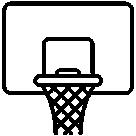
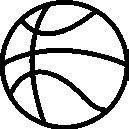
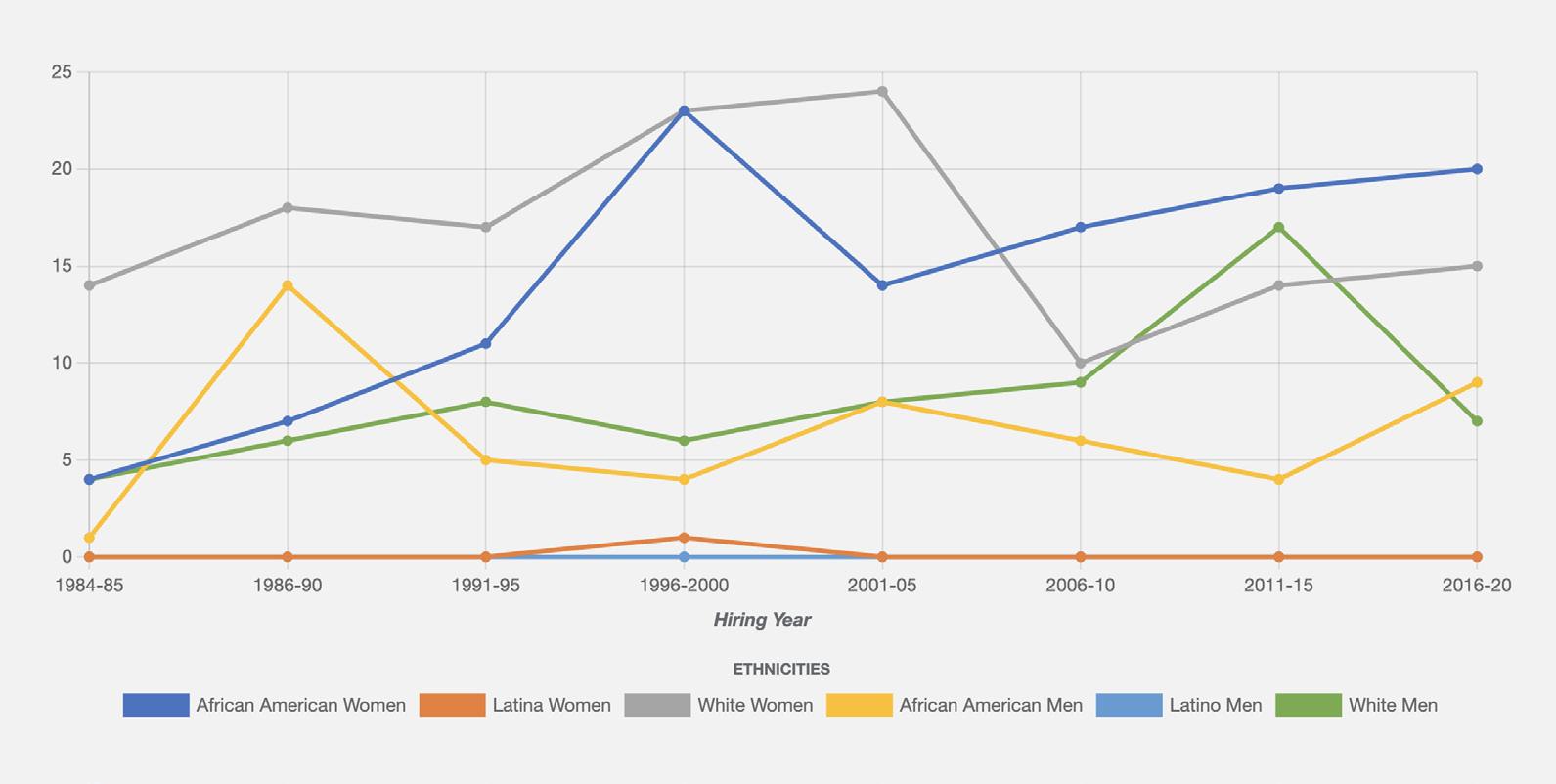
Previous research on positional segregation or st acking going back to the 1970s showed a decades-long trend that Blacks and Latinos are generally outfielders and not in leadership positions such as middle infielders, pitchers, or catchers. The exclusion of players of Color from on-field leadership positions often leads to their exclusion from being managers, similar to how the historical absence of Black quarterbacks led to the lack of the typical development pipeline for N F L head coaches of Color.

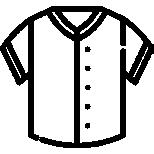
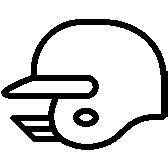
The position of catcher did not provide a pathway for managers of Color to the s ame degree as it did for White managers.
While pitching represents a narrow pathway for managers overall, it has been closed to managers of Color
At the time of our analyses, approximately 45% of catchers active in M LB were people of Color, a percent age that suggests a potential future pipeline for aspiring managers of Color
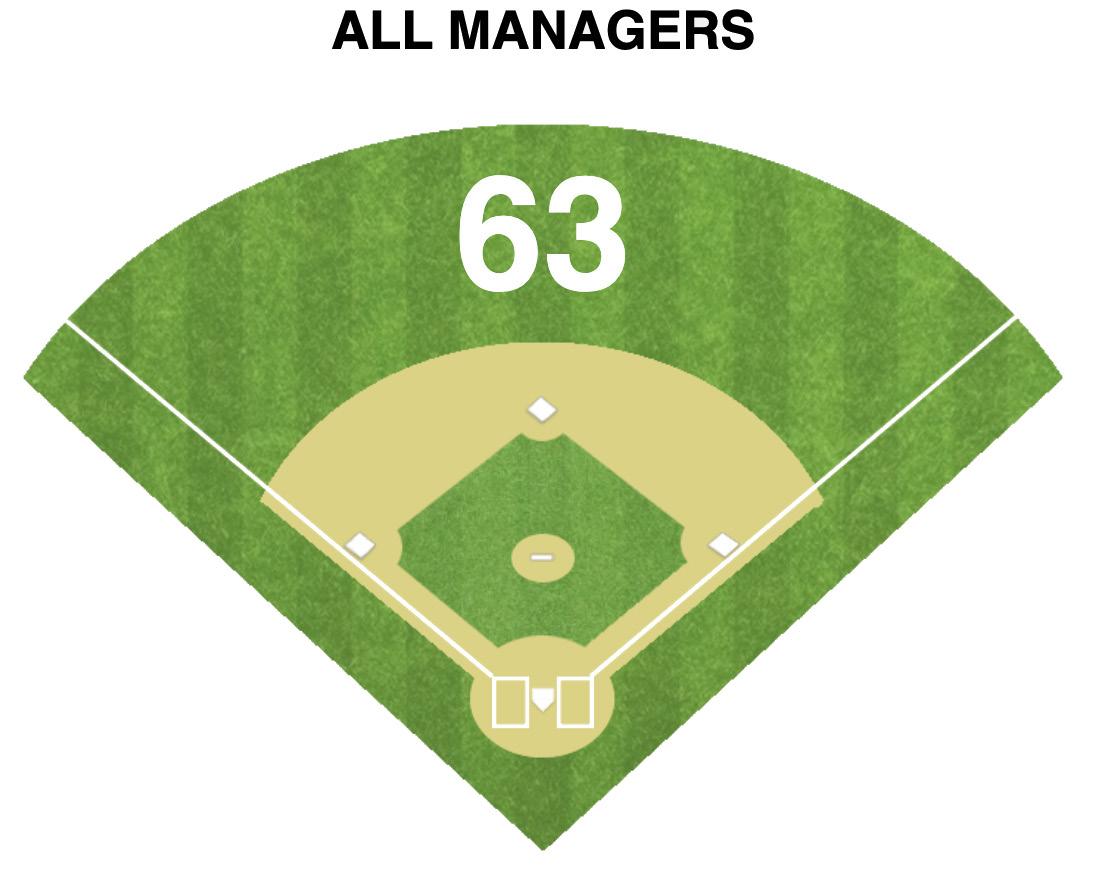
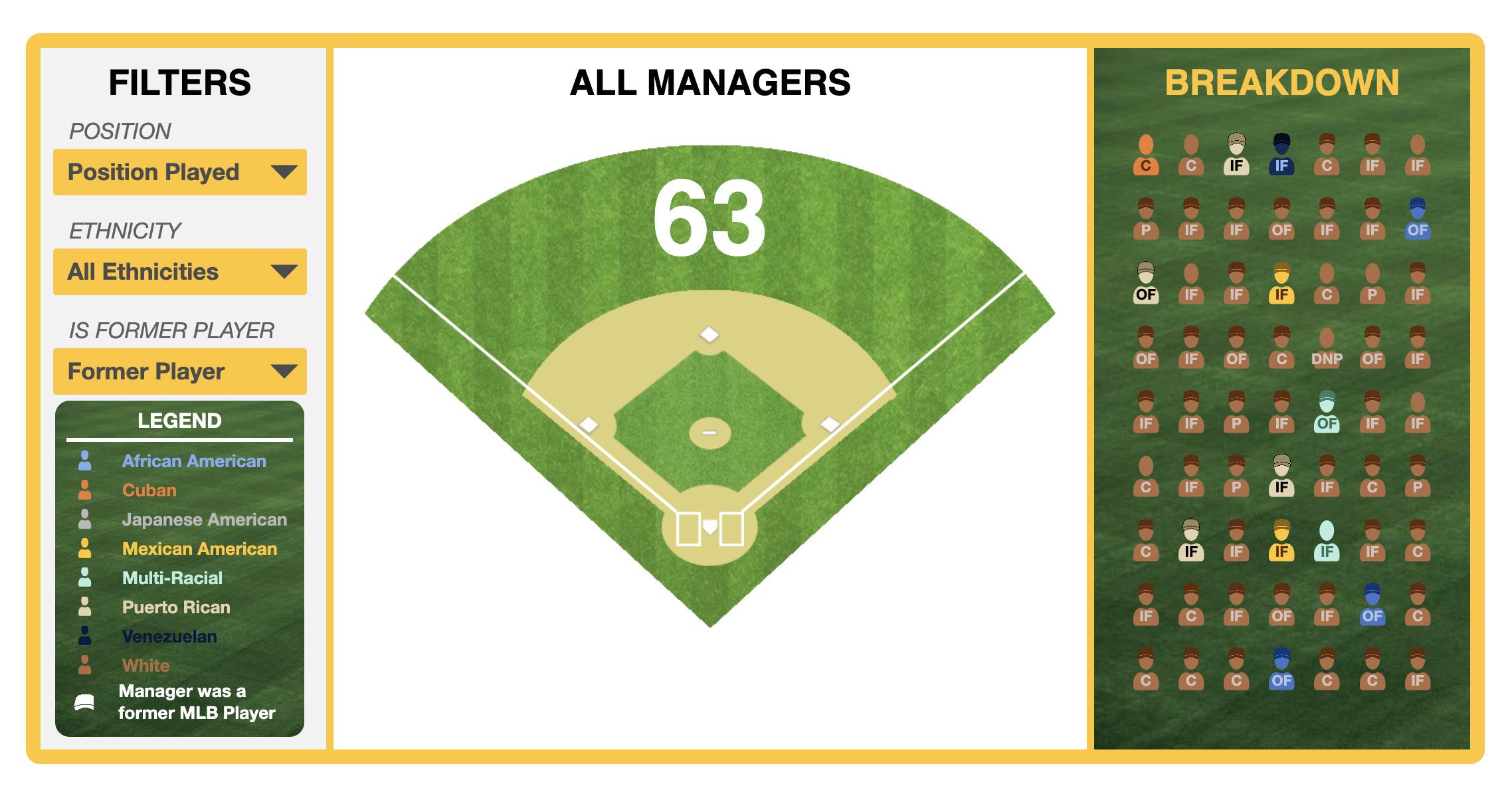
To maint ain a finger on the pulse of public opinion across a wide array of issues impacting sport, the Global Sport Institute often partners with O H Predictive Insights, a Phoenix-based market research company. These snapshot polls offer real-time insights that add to the public discourse on trending topics in sport.
The U.S. Supreme Court decision to allow st ates to legalize sports betting created a flurry of activity in the industry as it was now able to reach potential new sports gamblers. We wondered what the general perception and awareness was toward sports betting in America and whether there was a cultural and social shift in accept ance.
In a poll of 2,4 00 Americans, 4 4% of respondents supported U.S. adults being legally allowed to bet on sporting events, while only 16% opposed. 79% of respondents st ated that legalization would not affect their opinions on sports. As passionate fans continue to consume and place bets, 85% of respondents supported mechanisms to help curb problem gambling.
As cities and municipalities continue to weigh using public funds to pay for st adiums, we wondered if potential activities and policies could influence or motivate people in the community to support t axpayer funding of st adiums.
A national poll on public spending for sports st adiums revealed that if t ax subsidies were given to team owners, 62% of respondents would support requiring the implement ation of sust ainability st andards such as low carbon footprint, and 6 6% of respondents support requiring team owners to financially compens ate governments if the team decided to leave for another city.
After decades of debate over whether college athletes should be able to monetize their own name, image and likeness, the U.S. Supreme Court unanimously decided in favor of N I L policy. We wondered whether the general public supported or opposed the Court’s decision and if it would change their behaviors and attitudes toward college sports.
For years, the N CAA justified its prohibition on athlete compens ation by arguing that it would make college sports fans less likely to watch events and buy tickets. However, 53% of all respondents to the G S I poll somewhat or strongly agreed with the N CAA’s decision to allow college athletes to make money from N I L, and 7% st ated it made them more likely to watch games while 6% s aid it would make them less likely to tune in. The dat a showed that overall, 51% of those surveyed, regardless of how they felt about N I L, s aid they would watch the s ame amount of college sports.

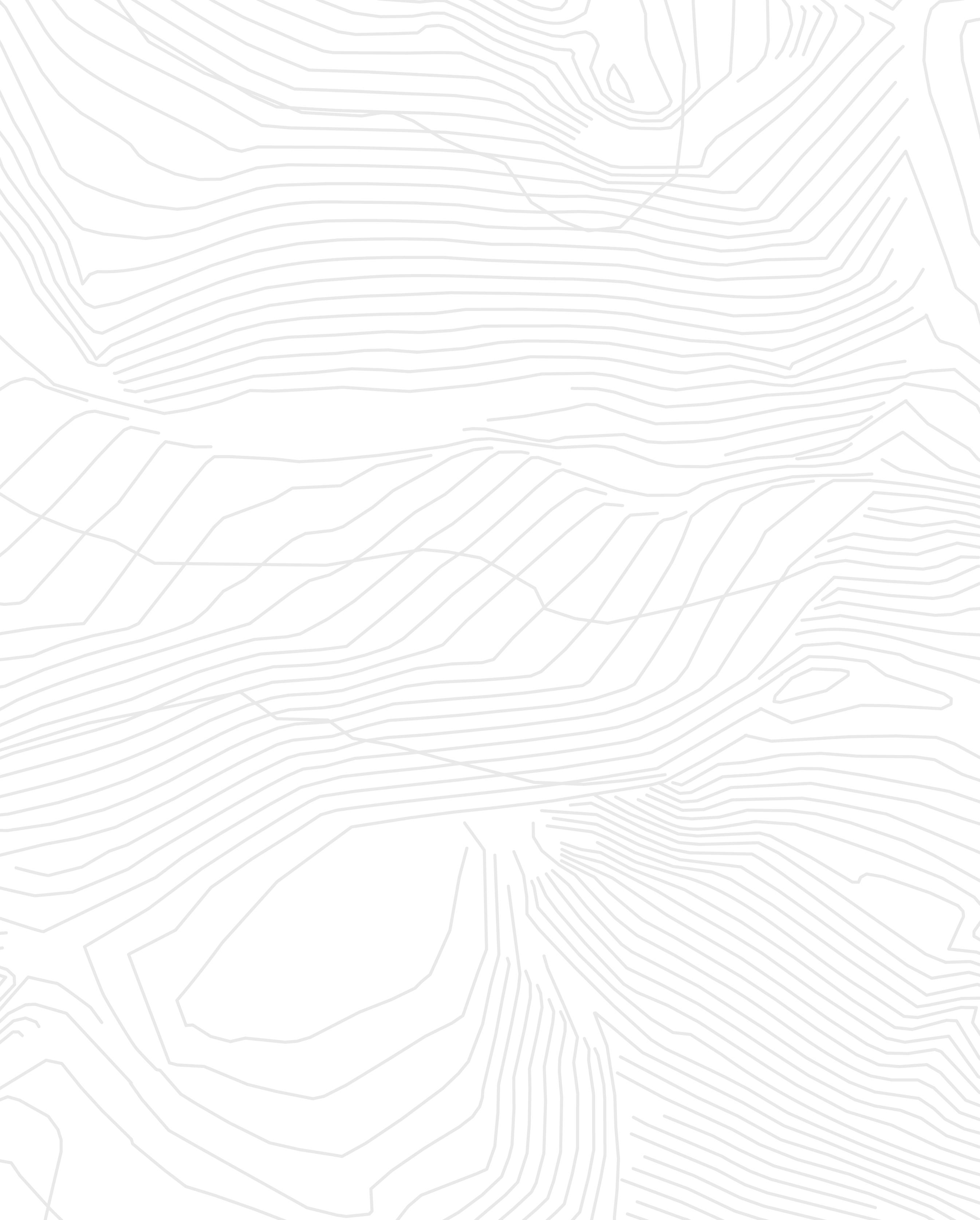
prior calls for research propos als, the Institute has offered an annual theme to which researchers are asked to apply their expertise, challenging scholars to expand or pivot their work in new directions. Previous years’ themes included “Sport 203 6,” “Race and Sport Around the Globe,” “Sport and the B ody,” and “Sex, Gender, and Sexuality in Sports ” This year, the call was purposely without a theme, which allowed for greater diversity among research areas and topics. The Institute selected propos als that had well-defined objectives, offered innovative approaches to research and would deliver impactful results that could be translated and globally shared with sport st akeholders.
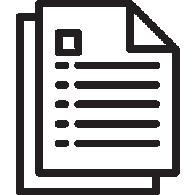
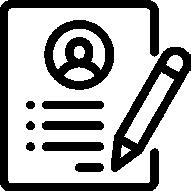
For many years, Heni Ben Amor, an assist ant professor at the AS U School of Computing and Augmented Intelligence, s aw sport mostly as a means of attracting undergraduate students to his research lab, AS U’s Interactive Robotics Laboratory
But a call for applications for Global Sport Institute funding led Amor along with his colleague Daniel Aukes to think about how to recontextualize a project they had always dreamt of working on together The resulting project, “Next-Generation Ergonomic Wearable Devices: Bridging AI and Robotics,” sought to uncover how to create robots and wearable devices that will assist people in the workplace, people with dis abilities, and people who suffer from musculoskelet al disease or injury
They s aw a hole in the field, which was that the existing technology was clunky and difficult to use.
“That has been one of the main reasons why prosthetics and rehabilit ation robotics hasn’t really caught fire or been widely used,” Amor s aid. “All of these devices are often bulky and it feels like you’re working against the machine or the machine is working against you because it doesn’t anticipate what you’re trying to do ”
“Our approach is the ex act opposite: How can we develop a machine that is lightweight and works with you, not against you. How can we make all of this in such a way that it maint ains comfort and ergonomy over long periods of time?”
When poorly designed or overly bulky robots are used in these situations, the people who use them can develop other injuries or conditions such as osteoarthritis. Their bodies overcompens ate because they are const antly fighting against the robotic technology rather than being aided by it. Amor and Aukes believe that by simplifying the approach and developing lighter, more technologically sophisticated robots for prosthetics and other wearables, outcomes can improve dramatically. This has applications for not only improving quality of life, but sport as well.
“All of this motion in real life is sport and is health care,” Amor s aid. “These are two sides of the s ame coin.”
The eventual prototype will be a met amaterial made of what is effectively laminated cardboard. Ideally, Amor s aid, robotic devices should be inactive most of the time, locked in place to help the user find comfort when at rest yet also lock into place to offer support for st anding and unlock to aid mobility and assist the wearer in movement or exercise.
In the future, the artificial intelligence that these researchers hope to program into the technology could learn a user ’s walking and movement styles and the external forces they create in one’s environment in order to be even more effective and generate better health and fitness outcomes.
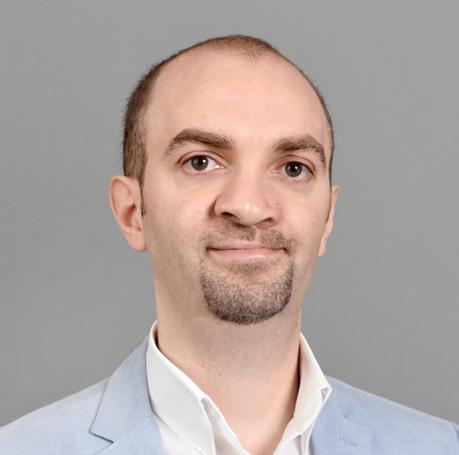
“Ultimately all of this is intelligence in hardware and software,” Amor s aid.
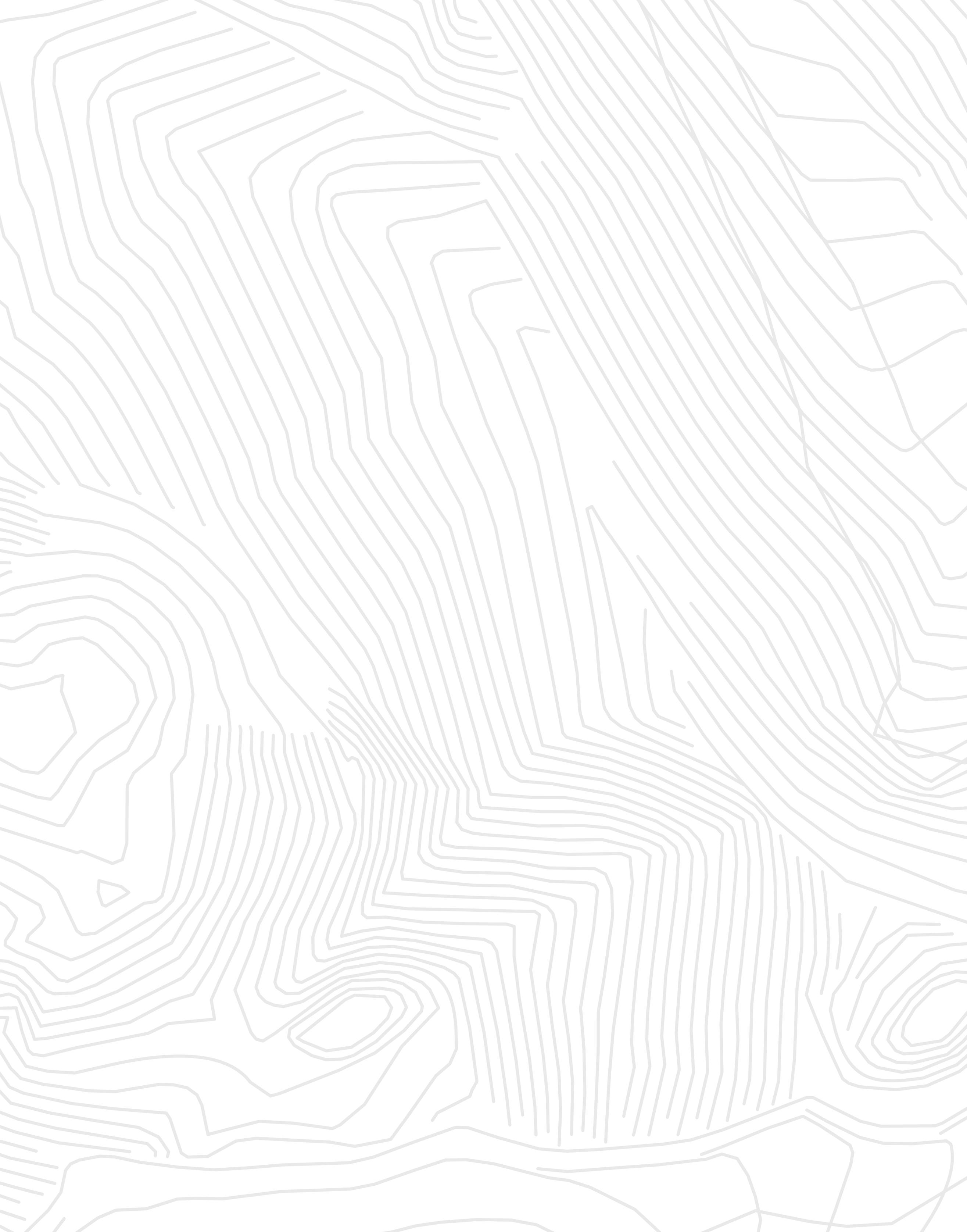
After originally receiving a course development grant from the Global Sport Institute in 2019, professors Alaina Zanin, Vera Lopez and Allison Ross were finally able to launch their Applied Coaching Communication class for AS U undergraduate students during the spring 2022 semester. With local youth sports programs back up and running, a yearslong project ultimately came to fruition.
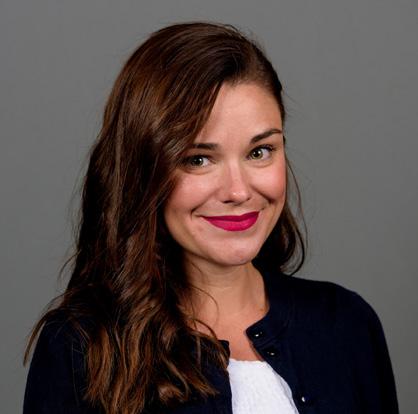
AS U students spent four weeks in a classroom with Zanin learning coaching communication strategies. These included how to empower athletes, coaching through positive reinforcement, helping young athletes with goal setting, and how to operate through process-based coaching as opposed to outcome-based coaching.
From there, students were placed as coaches in youth sports programs around the local community. One set of students was assigned to work with the Maricopa County chapter of Girls on the Run, a national nonprofit with which Lopez and Zanin had both previously worked and coached. Zanin’s students led the Tempe children through a couch to 5K program involving warmups, games and running practice but also life skills learned through sport.
Another youth sports program was i9 Sports, a Phoenix-based organizing body for youth sports competitions. Zanin’s students acted as leaders and coaches for i9 teams during soccer and basketball seasons.

“This course seemed like a perfect marriage of not only addressing the issue of having sport access
sites, but when I was a coach, it was apparent to me there was a need for more volunteers at these underserved sites,” Zanin s aid. “Parents and teachers are spread really thin and there’s a greater need for more mentorship and more positive role models, particularly female coaches and female coaches of Color.”
This project builds on previous work from the trio of researchers on youth sport, represent ation in sport, and sport participation, including Ross’ studies of sport-centric education at Champion Schools in Phoenix. It melds the opportunity to educate AS U students on better methods of coaching and leadership while also providing a t angible impact at local Tempe schools, right in AS U’s backyard.
“Empowerment is recursive,” Zanin s aid. “You might need that one person to tell you that yes, you can do it, and yes you can work hard at something bigger and yes you can be a leader. I definitely s aw that unfold over the course of a semester with my students.”
Going forward, Zanin hopes to keep working with the Tempe district, Girls on the Run, and other youth sports organizations that are open to collaboration. The goal is for the class to be available for AS U students each spring, in alignment with the most common track season at the scholastic level.
“The more that young girls are able to see female coaches in positions of leadership, they’re able to see and visualize that ‘I also belong in those positions,’” Zanin explained.
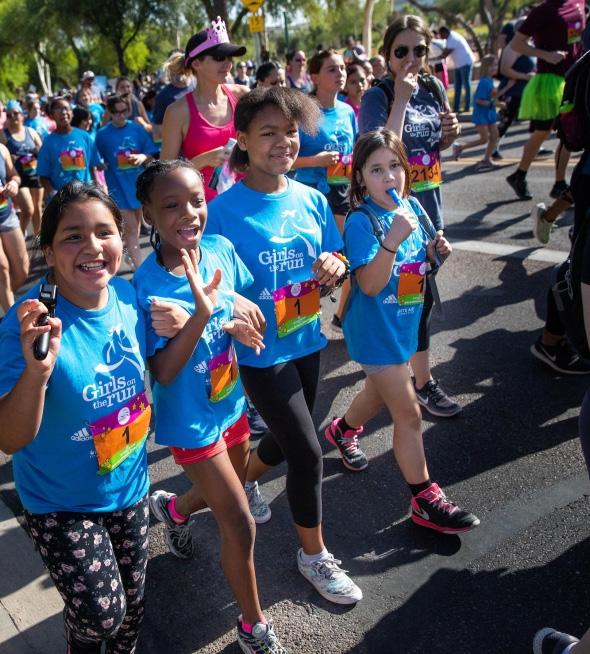
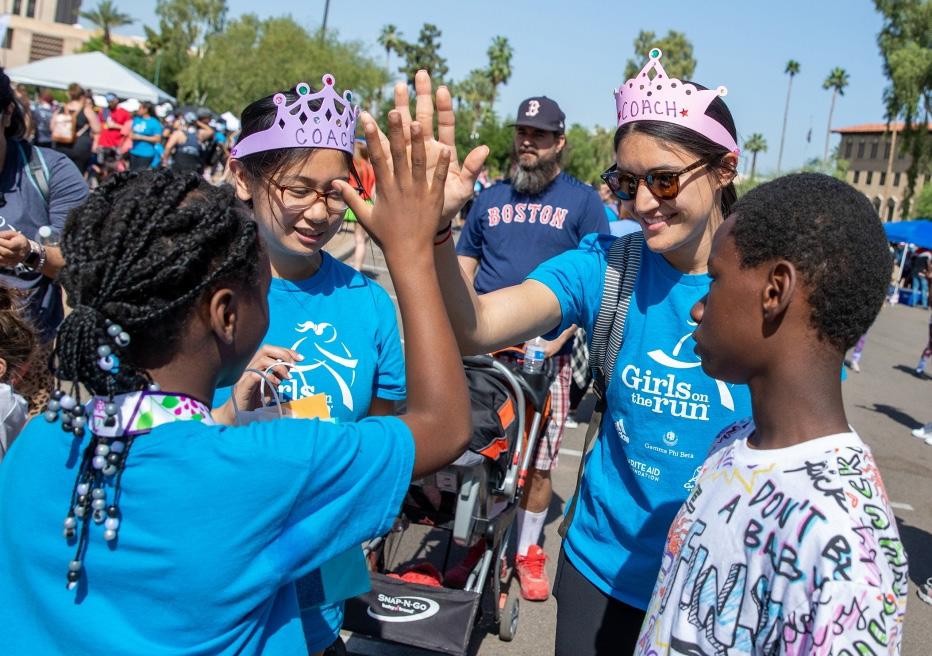
The United St ates celebrated the 5 0th annivers ary of Title I X in 2022, but St acey Flores, a graduate student at the T. Denny S anford School of Social and Family Dynamics at AS U, knows the game-changing bill did not lift all girls and women in athletics equally. Specifically, as a lifelong athlete herself and a Latina, Flores believes many Latinas in sport are still being left behind. With language barriers, different family structures, financial impediments and a lack of represent ation in the highest levels of sport, Latina participation in sport is still frustratingly low, even all these decades after Title I X leveled the requirements for support at the N CAA level.
Flores also believes that part of the problem is how little is understood about the Latina experience in sport generally “Latino athletes, both male and female, are severely understudied. Everything is through the context of the Black/White binary,” Flores explains. “It’s very different for Latinos in general, for a variety of factors from generation st atus, represent ation and not really seeing athletes that look like them where you see this is a possibility ”
In her Global Sport Institute-funded project, “Where are the Latinx Girls in Sport? Est ámos Aquí!” Flores is ex amining where Latinas’ underst anding of their own participation in sport comes from, where their support comes from as they participate, and the resources they have access to as they develop a competitive career from youth to college and beyond.
Flores has seen all levels of the athletics landscape, st arting with high school where she competed as a threesport athlete before later coaching many athletes who were trying to become first-generation college students. Flores worked in intramural and recreational sports at AS U, then later in student athlete development. She worked in semiprofessional spaces like the Arizona Fall League, which is operated by Major League B aseball during the off season.
To top it all off, Flores even experienced community college athletics and Major League B aseball work at the Arizona Diamondbacks.
Through it all, Flores s aw several patterns emerge. She noticed how sport specialization among young athletes and a lack of access for athletes who were priced out led to athletes failing to achieve their goals in school. She also noticed how the transition from one level to the next was a consistent challenge, whether that transition was from a low-income Title I school to a high school with more resources or whether the student was coming into American professional baseball after playing in another country
Flores wants to arm young athletes with the knowledge they need to make decisions that will set themselves up for success and to give coaches the resources to support those athletes.
“I know what my coaches did for me. They significantly changed the trajectory of my life and my experience,” Flores s ays. “I knew if I asked my coaches if they could come early or st ay late, they would come. And that’s not always the experience for a lot of athletes. And I think it’s import ant for coaches to underst and that you can’t coach everybody the s ame, and it t akes a cert ain skill set to work with athletes at all levels and build that cohesion so everybody moves through together.”
Many of these lessons would serve any young athlete well, but Latinas have so few role models along their development path that it can be easy to lose momentum along the way. Flores believes information and underst anding can help change that.
“I just really want to elevate the experience of Latinos in sport because we’re such an understudied group, and for people to see coming behind that sport is a viable option not only to get to college, but to go pro,” she s ays.
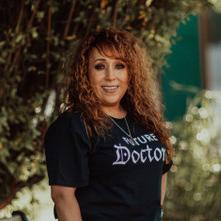
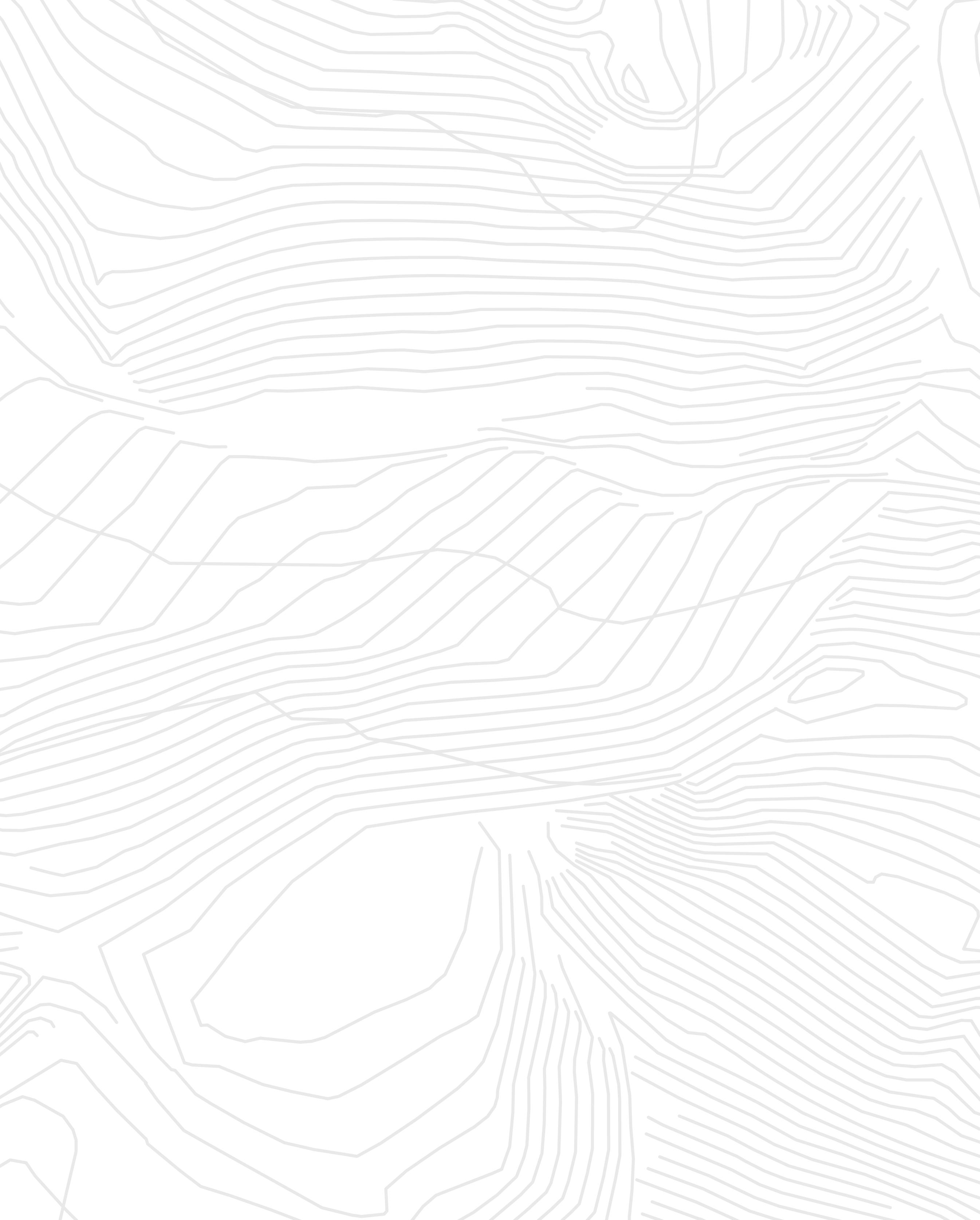
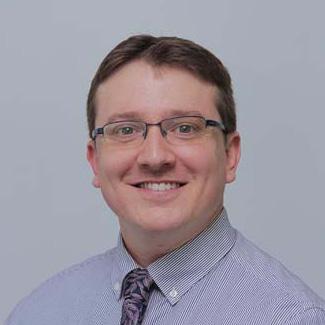
As fans returned to st adiums in 2021, so did more sportrelated tourism. Nicholas Wise, an assist ant professor at the School of Community Resources and Development at AS U who studies human geography with an emphasis on sport, applied for G S I funding with hopes of exploring the emotional changes that people experience in the communities surrounding sports st adiums.
In a project called “Exploring the Intersects Between Urban Change, Sporting Event Spaces, and Emotional Well-Being,” Wise used cameras with G P S technology that allowed him to map out the walking interviews he conducted with research subjects while also monitoring their emotional indicators on video. He conducted interviews in Phoenix, Arizona, and plans to do similar interviews in Rijek a, Croatia, later this year
“I always feel that we tend to overlook the impact of the residents, because people will travel to a place and go to st adiums, and it will generate a sense of pride in people when they’re going to a place for the purpose of attending,” Wise explained. “But I want to think more about the people who actually live around these areas where they’re developing new st adiums and new venues, because they also can create different emotions. They can create a sense of anger, a sense of fear, and also a sense of pride in a place as well ”
By comparing differences in United St ates neighborhoods and European neighborhoods, Wise hopes to underst and how differences in urban planning in each continent, combined with differences in relationship to sport, affect the emotional impact sports st adium development and sport-related tourism have on a community in each place. This is particularly import ant as U.S. sports teams negotiate another round of st adium builds and renovations, from Buffalo to Miami and beyond.
“We [the U.S.] tend to have more decentralized planning, so when st adiums are built, they’re either in suburban areas or interurban areas for the purpose of regeneration, or they’re built in urban areas for extended developments, st adiums acting as cat alysts for economic development,” Wise s aid. “Whereas in Europe, it tends to be much more centralized planning, so what I’m expecting to see is it impeding more on surrounding neighborhoods
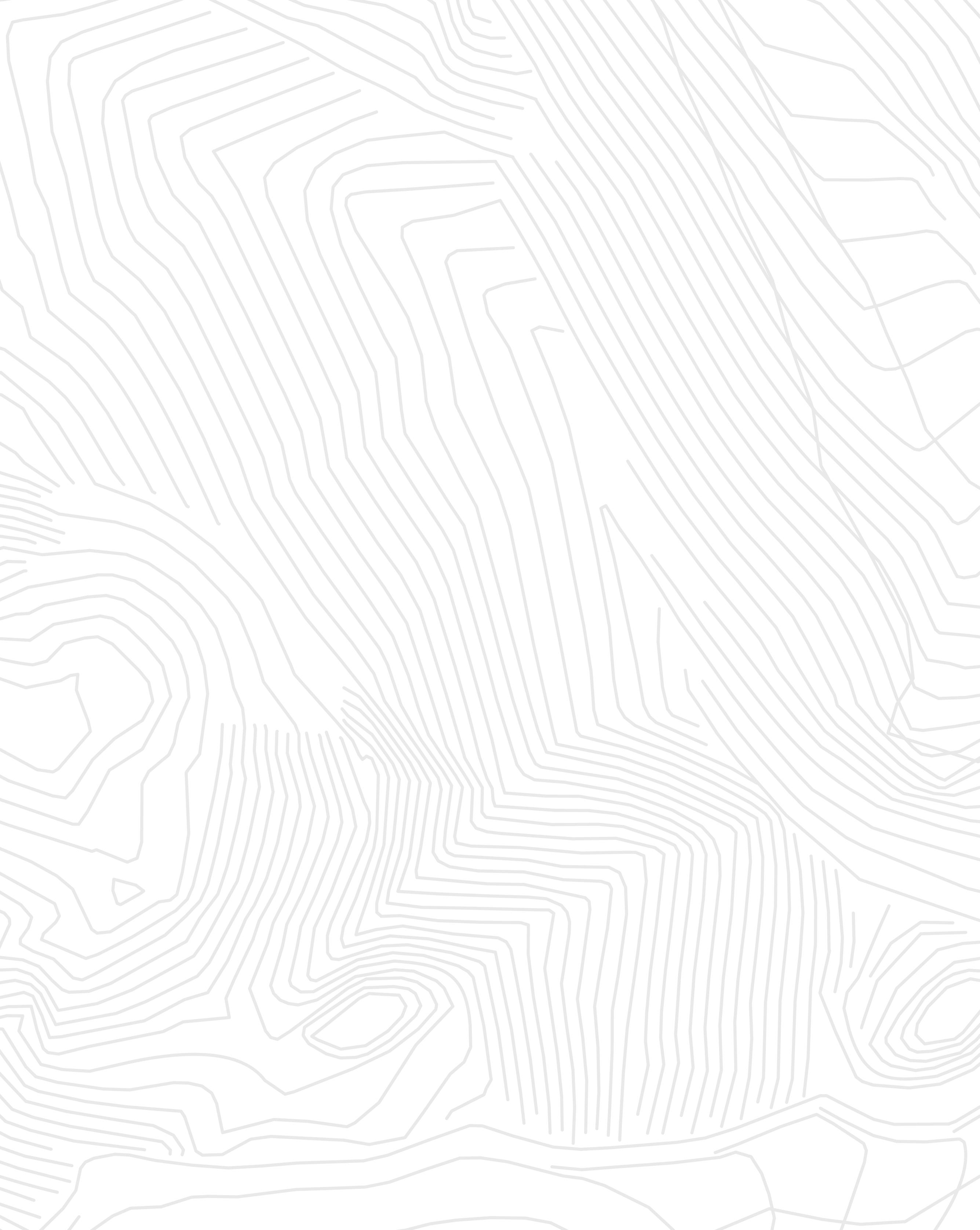
In the past, Wise has conducted research on rugby’s popularity in Argentina as well as on the relationship between London communities and the Jacksonville Jaguars of the American National Football League during the team’s agreement to play one game in London each season from 2013 through 2019. Now, he hopes to turn the focus from the urban element to the community, analyzing the impact of these grand structures and the change they create in a community and the impact they have on people’s emotional st ate.
“Lots of sports scholars focus on fandom and sports marketing and the impacts of teams on places,” Wise s aid, “but I feel sometimes we forget about the residents who are there 3 65 days a year.”
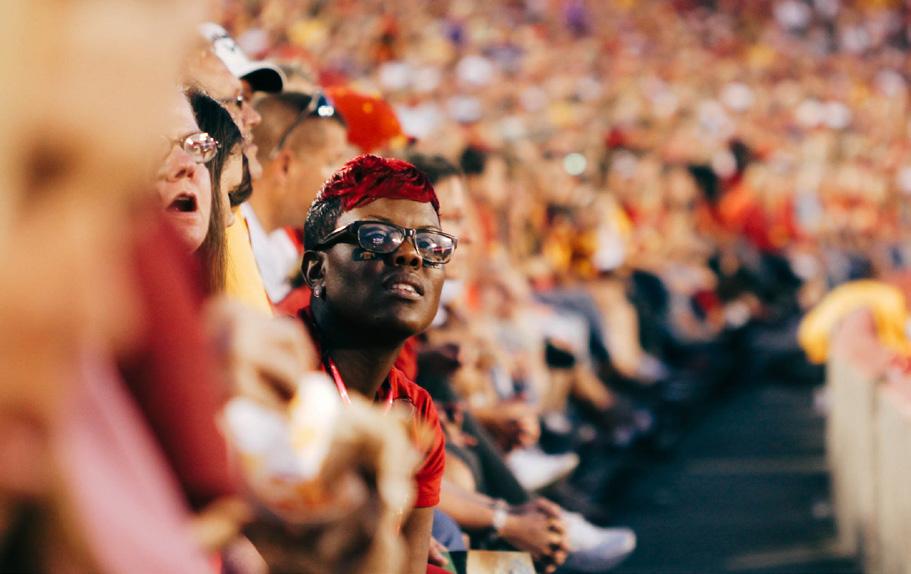
Spor t Of ficiating as Aggression Labor: A Case Analysis of Antecedent s and Consequences of Masculine Aggression and Gender Disparities in an Athletic Organization
Alaina Zanin, PhD | assist ant professor
Hugh Downs School of Human Communication, The College of Liberal Arts and Sciences
Multilingual Baseball Book: Identit y, Ideology, and Intercultural Communication in the Transnational Game
Brendon H. O’Connor, PhD | associate professor School of Transborder Studies, The College of Liberal Arts and Sciences
Playing Through: Positioning and Literature on Athlete Mental Health Giac-Thao (Alisia) Tran, PhD | associate professor College of Integrative Sciences and Arts
Next- Generation Ergonomic Wearable Devices: Bridging AI and Robotic s
Primary: Heni Ben Amor, PhD | Secondary: Daniel Aukes, PhD Ira A. Fulton Schools of Engineering
E xtreme Heat and Air Pollution: An Uneven and Risk y Playing Field
Jennifer Vanos, PhD | associate professor College of Global Futures, Julie Ann Wrigley Global Futures Laboratory
Understanding the diverse impact s of social media on college gym culture and young adult men’s exercise behaviors
Joris Van Ouytsel, PhD | assist ant professor

Hugh Downs School of Human Communication, The College of Liberal Arts and Sciences
What if consistent fitness exercises could extend your life?
That’s what Dr. Connor Sheehan discovered in a research study funded by the Global Sport Institute, as he and graduate assist ant Longfeng Li found based on a national survey that workouts like stretching, hiking and walking were positively associated with longer life.
Watch the full video at bit.ly/G SI LiveLonger
E xploring the Intersect s Bet ween Urban Change, Spor ting Event Spaces , and Emotional Well- Being Nicholas Wise, PhD | assist ant professor
School of Community Resources and Development, Watts College of Public Service and Community Solutions
Defending the goal: Understanding the impor tance for inclusion of Iroquois Nation lacrosse teams in all international competitions .
Primary: Samantha Becker | Secondary: Angela Gonzales, PhD
Primary: Office of the C I O, Secondary: School of Social Transformation, The College of Liberal Arts and Sciences
Where are the Latinx Girls in Sport s? E stamos Aquí!
Primary: St acey Flores | Secondary: Scott N. Brooks, PhD
T Denny S anford School of Social and Family Dynamics, The College of Liberal Arts and Sciences
E xploring the ef fect s of tDC S user expectations on motor per formance enhancement: Harnessing the power of placebo ef fect s within neuro -technology
Sydney Schaefer, PhD | assist ant professor
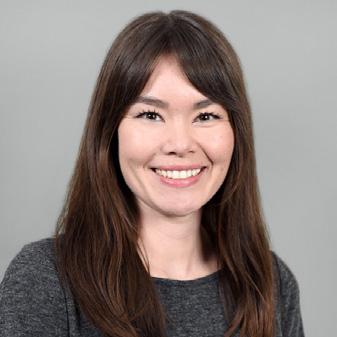
School of Biological and Health Systems Engineering, Ira A. Fulton Schools of Engineering
E xamining spor t for traumatized youth and the ef ficacy of a trauma education program
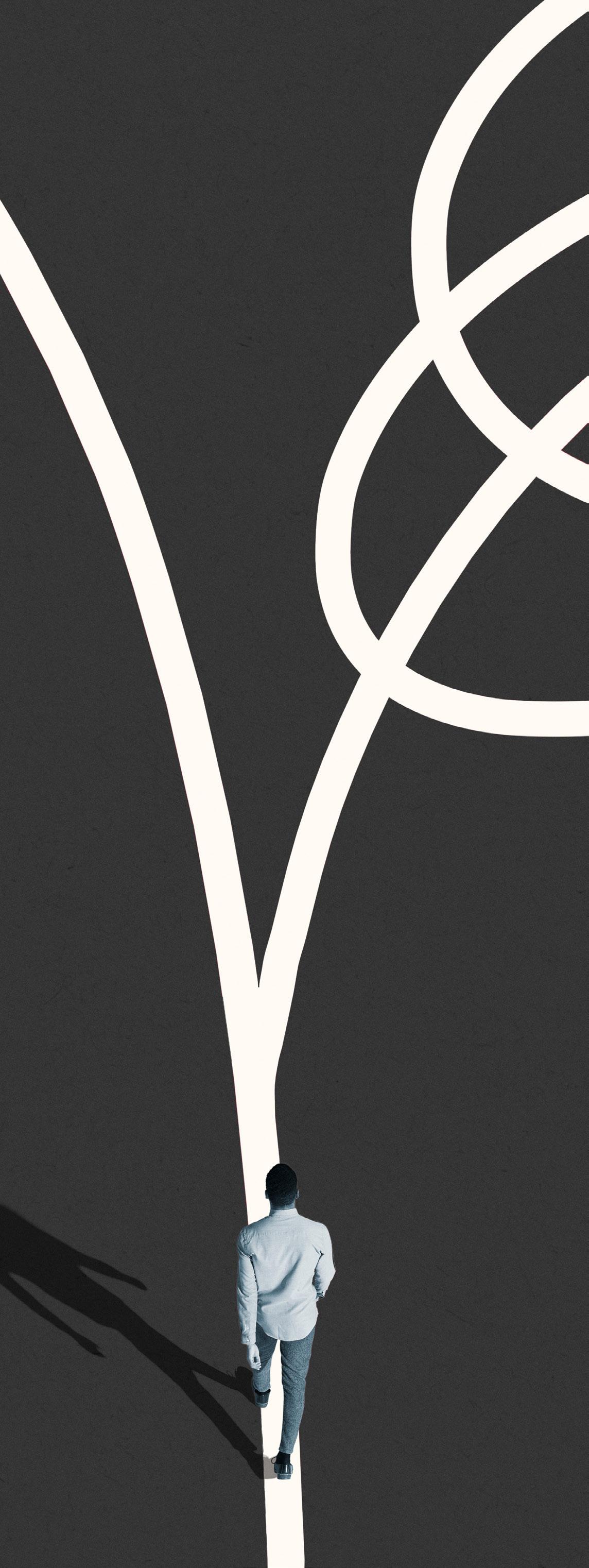
Eric Legg, PhD | associate professor
School of Community Resources and Development, Watts College of Public Service and Community Solutions
Personalized Body Protective Gears Through Hierarchically Structured Additive Manufacturing
Primary: Weiheng Xu, PhD | Secondary: Kenan Song, PhD Ira A. Fulton Schools of Engineering
“It is inspiring to see the range of research in this year ’s seed grant projects and what a positive impact these discoveries will have on sport.” CA S E Y S E C H L E R , P H D A SS O C I AT E D I R E C TO R O F R ES E A RC H G LO BAL S PO RT I N S TITUT E
Global Sport Scholars are past AS U grant recipients who successfully complete a project or launch a new course as a result of funding provided by the Global Sport Institute. Global Sport Institute senior scholars are faculty whom we recognize for their significant research contributions to the institute above and beyond the norm. The diversity of our seed grantees’ schools and colleges demonstrate the vast nature of our interdisciplinary efforts.
Bradley Adame, PhD | associate professor
Hugh Downs School of Human Communication, The College of Liberal Arts and Sciences
Jorge Caviedes, PhD | research professor
School of Computing and Augmented Intelligence, one of the Ira A. Fulton Schools of Engineering
Xiangfan Chen, PhD | assist ant professor
The Polytechnic School, one of the Ira A. Fulton Schools of Engineering
Erin Feser, PhD | faculty research associate* College of Health Solutions
Eric a Forzani, PhD | associate professor
School for Engineering of Matter, Transport and Energy, Ira A. Fulton Schools of Engineering, Biodesign Center for Bioelectronics and Biosensors, Biodesign Institute
Angela Gonzales, PhD | associate professor School of Social Transformation, The College of Liberal Arts and Sciences
Masumi Iida, PhD | associate professor
T. Denny S anford School of Social and Family Dynamics, The College of Liberal Arts and Sciences
Victoria Jackson, PhD | clinic al assist ant professor
School of Historical, Philosophical and Religious Studies, The College of Liberal Arts and Sciences
Hanqing Jiang, PhD | professor
School for Engineering of Matter, Transport and Energy, one of the Ira A. Fulton Schools of Engineering
Vishnu Kak araparthi | doctoral c andidate School Computing & Augmented Intelligence, Ira A. Fulton Schools of Engineering
Chong Lee, PhD | associate professor College of Health Solutions
Hyunglae Lee, PhD | associate professor School for Engineering of Matter, Transport and Energy, one of the Ira A. Fulton Schools of Engineering
Eric Legg, PhD | associate professor School of Community Resources and Development, Watts College of Public Service and Community Solutions
Robert LiKamWa, PhD | assist ant professor School of Arts, Media and Engineering, Herberger Institute for Design and the Arts
Devoney Looser, PhD | Regents Professor Department of English, The College of Liberal Arts and Sciences
Vera Lopez, PhD | professor School of Social Transformation, The College of Liberal Arts and Sciences
Margaret Luciano, PhD | assist ant professor* W. P. Carey School of Business
Tongyu Ma | doctoral c andidate* College of Health Solutions
Andrés Martinez | special advisor to the president Office of the President
Andrew Maynard, PhD | associate dean and professor
School for the Future of Innovation in Society, College of Global Futures
Troy McDaniel, PhD | assist ant professor
The Polytechnic School, one of the Ira A. Fulton Schools of Engineering
Mary Neubauer | President’s Professor School of Art, Herberger Institute for Design and the Arts
Suzanne Peterson, PhD | associate professor
Thunderbird School of Global Management
Allison Ross, PhD | assist ant professor College of Health Solutions
David Schaefer, PhD | assist ant professor*
T. Denny S anford School of Social and Family Dynamics, The College of Liberal Arts and Sciences
Sydney Schaefer, PhD | assist ant professor
School of Biological and Health Systems Engineering, Ira A. Fulton Schools of Engineering
Betsy Schneider | clinic al assist ant professor School of Art, Herberger Institute for Design and the Arts
Dennit a Sewell | program director and professor of practice School of Art, Herberger Institute for Design and the Arts
Connor Sheehan, PhD | assist ant professor
T. Denny S anford School of Social and Family Dynamics, The College of Liberal Arts and Sciences
Kenan Song, PhD | assist ant professor
The Polytechnic School, one of the Ira A. Fulton Schools of Engineering
Ty (Tim) Tang | graduate student Department of Psychology, The College of Liberal Arts and Sciences
Giac Thao (Alisia) Tran, PhD | associate professor College of Integrative Sciences and Arts
Jennifer Vanos, PhD | assist ant professor School of Sust ainability, College of Global Futures
Edward Vargas, PhD | assist ant professor School of Transborder Studies, The College of Liberal Arts and Sciences
Kaila Ann Vento | doctoral c andidate* School of Nutrition and Health Promotion, College of Health Solutions
Peiyuan Wang, PhD | doctoral c andidate* School of Biological and Health Systems Engineering, Ira A. Fulton Schools of Engineering
Floris C. Wardenaar, PhD | assist ant professor School of Nutrition and Health Promotion, College of Health Solutions
Kevin Wilson | doctoral c andidate School of Community Resources and Development, Watts College of Public Service and Community Solutions
Weiheng Xu | graduate service assist ant The Polytechnic School, one of the Ira A. Fulton Schools of Engineering
Yezhou Yang, PhD | assist ant professor School of Computing, Informatics, and Decision Systems Engineering, Ira A. Fulton Schools of Engineering
Alaina Zanin, PhD | assist ant professor Hugh Downs School of Human Communication, The College of Liberal Arts and Sciences
Wenlong Zhang, PhD | assist ant professor
The Polytechnic School, one of the Ira A. Fulton Schools of Engineering
Yanchao Zhang, PhD | professor School of Electrical, Computer and Energy Engineering, one of the Ira A. Fulton Schools of Engineering
Meilin Zhu | undergraduate student* School of Molecular Sciences, The College of Liberal Arts and Sciences
Michael McBeath, PhD | professor
Department of Psychology, The College of Liberal Arts and Sciences
Barry Bozeman, PhD | Regents Professor and research director Center for Organization Research and Design, School of Public Affairs
*Global Spor t S cholars previously with Arizona State University

Though the stories of 2021 and 2022 were largely about the sports world coming out of a slumber and once again connecting, competing and cheering together, it was clear right away that a facade of normalcy on events and broadcasts would not be enough to dissolve the significant ment al health problems that developed during the shutdowns and isolation of 2020. At the Tokyo Olympics, athletes such as Simone Biles and Naomi Os ak a turned the world’s attention to athlete ment al health, and the heavily publicized challenges of Ben Simmons in the National B asketball Association, Raheem Sterling in the English Premier League, and Harry Miller in The Ohio St ate University football program carried the mess age onward.
“
We as athletes have actually been in this crisis for a while. A lot of the factors, the research, it’s not new. And because of social media, we’re seeing the horrible and tragic headlines more frequently.”
partners. GS I published a full digit al issue on the topic at Global Sport Matters, with first-person work from current and former athletes as well as academics and veteran sports journalists. Articles from this issue were republished by highprofile news outlets including Slate and The Guardian.
At the s ame time, Tran’s GS I-funded research helped fill a vacuum and will be submitted to academic journals throughout 2022.
In April, ment al health took center st age as GS I collaborated with Sun Devil Athletics for the second annual S DA Venture Challenge. The Timeout App, founded by former AS U volleyball player Maya McClendon, is an all-in-one well-being platform that provides athletes with access to therapy and other resources.
“We as athletes have actually been in this crisis for a while. A lot of the factors, the research, it’s not new,” s aid McClendon. “And because of social media, we’re seeing the horrible and tragic headlines more frequently ”
By the spring, a time when college campuses are typically bustling with soccer, basketball and softball matches as the weather turns breezy, it was impossible to look past ment al health. More than a half-dozen college athletes from all corners of the United St ates died by suicide. What began as a concern had now grown into a crisis across sport and broader society
“This should be a giant wake-up call for the N CAA and its schools,” wrote G S I graduate service assist ant Rebecca Falkner in a piece at Global Sport Matters. “This must stop, and athletes must not be afraid to ask for help ”
As the N CAA and other sports organizations responded to the crisis, the Global Sport Institute commissioned research from Global Sport Scholar Giac Thao (Alisia) Tran, who conducted a literature review of existing athlete ment al health research and found a shockingly small degree of work ex amining the lived experiences of athletes.

“I think we’re reinforcing this really narrow, performance-focused view of athletes that really doesn’t speak true to the power of sport and the power of athletes to affect others through sport,” Tran s aid.
A dire situation combined with a lack of information created a meaningful opportunity for the Global Sport Institute and its
Every major sports league in the world now has a ment al health policy. Universities are reckoning with death and grief on-campus and imagining new solutions to this crisis. G S I continues to be a source of information and collaboration for the sports world as it doubles down its commitment to helping athletes’ minds as much as it helps their bodies.
Athletes continue to tell us they are not ok ay with their actions and words. In response, the sports industry has acknowledged it can and should be doing more to support the people who are its lifeblood, from athletes to coaches and beyond.
Sport is both reckoning with its roots, uncovering how history and habit created circumst ances that don’t suit everyone who competes, as well as navigating new territory during a time of unprecedented strain on our ment al well-being. By making ment al health a priority, sport has an opportunity to confer a host of benefits supporting ment al wellness and to be more s afe, inclusive, and inspiring.

The sports industry has heightened its attention on the ment al wellbeing of athletes, and most professional teams now employ ment al health professionals. But new Global Sport Institute research shows there are gaps in how athlete ment al health is being studied and treated, with profound consequences.
Read the full article at bit.ly/GS MAthleteMent alHealth
Ment al health is rigidly and fat ally misunderstood, especially in college athletics. A former Division I college basketball player explains what the N CAA and university athletic programs miss about athlete ment al health.
Read the full article at bit.ly/GS M NCAAMent alHealth
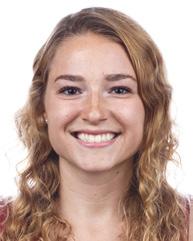
“Speaking about our mental health experiences is what invites us to fully see each other. It is what allows our athletic ecosystem to see us.” M I K A E LA B R EW E R F O R M E R S TA N F O R D AT H L ET E








 Images courtesy of Timeout Software, Inc.
Photo courtesy Tim Trumble for Global Sport Institute
Images courtesy of Timeout Software, Inc.
Photo courtesy Tim Trumble for Global Sport Institute

Coming from a family of athletes, Maya McClendon keenly underst ands the financial and social challenges that face people who make it to the highest levels of sport. But she also knows that decision-makers are only just now catching on.
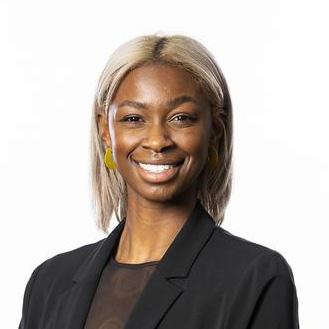
With that in mind, McClendon in 2020 founded Timeout, an app-based company dedicated to “making AI-powered ment al health care delivery accessible to all athletes anytime, anyplace.” And in 2021, McClendon, a former indoor volleyball player at AS U, competed in the Global Sport Venture Challenge, a funding track within the annual Venture Devils Demo Day at AS U, where she won the top prize of $15,000. That allowed Timeout to begin work on the machine-learning technology behind its app, and in the spring of 2022, McClendon pitched a panel of judges at the Second Annual Sun Devil Athletics Venture Challenge, at which the company again won top prize, an additional $20,000.
Within Timeout, athletes are able to schedule meetings with clinical ment al health specialists, find educational materials, and underst and their own st ate of mind through surveys and other interactive sections. The opportunity to partner with S DA, combined with a separate agreement with Spalding University in Louisville and a potential National Institute of Health grant, has propelled Timeout to a st age where it is rolling out its app to active student-athletes while continuing to develop the technology and garner feedback on the program itself.
“Innovation is such a big, loaded word in our society, but really getting down to how we can incorporate

research and innovative tools that are socially impactful and created by athletes, for athletes,” McClendon s aid.
During the fall of 2022, McClendon will work with S DA coaches and administrators to get AS U athletes set up on Timeout in a customized fashion. From that point, student-athletes will interact with the app at their discretion and either engage with the informational tools or connect with the pool of professional therapists and psychologists who can be cont acted through the app. McClendon’s st aff of athletes and clinical professionals will then incorporate us age dat a and feedback to improve the technology and programming Timeout offers as it rolls out across the country.
“We feel misunderstood and we don’t have a lot of people who underst and our experiences,” McClendon s aid of athletes. So we’re really creating a community around a tool that’s made for us. I haven’t seen it done before ”
Whereas the Spalding University collaboration will give Timeout a more focused set of Division I I athletes to learn from and work with, the S DA bet a testing partnership gives Timeout a large-scale site for underst anding student-athletes at a deeper level and making the app the best it can be.
“I keep coming back and seeing how I can work with G S I and AS U because we have t alked to other universities who are afraid to t ake risks and invest in opportunities like this,” McClendon s aid.
“Having my alma mater be supportive means a lot ”

The college sports landscape completely changed this past academic year, with name, image, and likeness laws passing across the country and universities finally leaning into athletes’ ability to make money while competing for amateur athletic programs. Having long studied and counseled around athlete experience and post-career transitions, the Global Sport Institute quickly became a go-to source for expertise and strategy around N I L.
GS I Associate Director of Innovation Programs Jeff Kunowski was invited to join the Sun Devil Athletics name, image and likeness committee, recognizing his one-on-one work with athletes to shape their N I L brands while also advising the university’s athletic department on how to support athletes who hoped to build careers and brands outside of sport during their time at school. At the second annual Sun Devil Athletics Venture Challenge, two N I L companies took home prizes. VO2, a blockchain-based athlete-fan interaction platform, won $10,000 and bet a testing opportunities with S DA. Get Gifted, an NI L brand management app st arted by Sun Devil football athlete Michael Matus, will bet a test the app with S DA as well.
At Global Sport Matters, reporter Allison Torres Burtk a wrote that athletes do not only use N I L to earn money for themselves, but also to give back to their communities. Burtk a interviewed a vice president at the B oys & Girls Clubs of Western Pennsylvania, where Heisman Trophy winner Kenny Pickett set up a summer camp and philanthropy program.
Through a partnership with Phoenix-based O H Predictive Insights, GS I also pounced quickly to uncover public opinion on NI L in the United St ates. Generally, the poll found Americans supported N I L, though many worried about inequit able income distribution or athletes partnering with uns avory companies.
“There was a lot of consternation initially about the destruction of college sports, the end of amateurism, and what does this mean for college sports,” GS I CE O Kenneth Shropshire told KJZ Z, the Arizona affiliate of National Public Radio. “Our poll showed, everybody’s pretty much O K with it.”
At the s ame time that NI L upended college sport, athletes everywhere continued to evaluate their post-career options more closely and arm themselves with the knowledge necess ary for making smart business decisions. G S I extended its partnership with the N BA G League and its professional pathway program, in which elite young athletes play on the Ignite team rather than a college squad. Through an “Essentials of Sports Business” course, Ignite players earn college credit while gaining lessons in labor, financial literacy, personal branding, and more.
For the first time in 2022, GS I was able to meet in-person with Ignite players, coaches and st aff, and these meetings culminated in a season-ending education session that also involved lessons in entrepreneurship and real est ate.
“This is a business first and not a game first,” Ignite guard Scoot Henderson s aid. “I’m going to keep that for a very long time ”
As the business of sport grows and athletes gain a greater share of the power in the industry, GS I has the resources and insight to help guide athletes in all professional endeavors, during and after their careers.

“ NIL of fers student-athletes the opportunit y to formalize that , and organize that , and to put a brand around it . And from that brand can come real resources that can move missions for ward.”
Scott Koskoski, vice president of advancement Boys & Girls Clubs of Western PennsylvaniaGlobal Sport Institute visits N BA G-League headquarters in Walnut Creek, CA Photo by Brendon Kleen for Global Sport Institute
By building partnerships with professional teams, leagues and organizations in the sports industry, we are able to reimagine solutions to challenges in sport. This year, we provided learning opportunities to the newly-signed athletes in the N BA’s G League, shared research findings focused on diversity, equity and inclusion in partnership with Pro Sports Assembly and launched the inaugural Arizona Coyotes Venture Challenge to support entrepreneurship and innovation through funding and bet a testing.


As calls for diversity, equity and inclusion have increased globally, Pro Sports Assembly emerged in 2020 as a convenor for those in professional sport dedicated to improving the industry. In 2021, we led the creation of the Sports Equity Research Project, which included the research survey Business Case for Diversity in Sport that focused on underst anding sports fan and consumer sentiments toward D E I initiatives in professional sports.
In June, our team presented the survey findings to over 100 invited members of Pro Sports Assembly, from middle management and executive levels of front office sports, and facilit ated a session using The AS U Spark Method (™) aimed at driving actionable solutions through collaboration and convers ation. Our continued partnership will provide Pro Sports Assembly with the dat a and knowledge to better underst and the issues in sport it aims to solve.

“
Working with GSI on important research for professional sports leaders provided Pro Sports A ssembly members with insightful data to drive their decision-making and discernment around strategy and staf fing, impacting both their external and internal facing operations. We’re just getting started with this partnership and look for ward to GSI’s continual impact . ”
L aura Dixon, President and E xecutive Director, Pro Spor ts Assembly
The Arizona Coyotes’ commitment to supporting innovation in sport was the cat alyst for creating the Arizona Coyotes Venture Challenge, the first collaboration between the Institute and the Coyotes. The program features $6 0,000 in awarded funding and an opportunity for ventures to work alongside the Southwest’s first pro hockey team. At our inaugural event, “Suji”, a compression band firm using technology to maximize recovery and workout through scientifically calibrated pressure levels, emerged as the top prize winner, with $3 0,000 in funding and 15 hours of legal services by D LA Piper
“ It has been an honor to partner with the Global Sport Institute and Arizona State Universit y to support ASU student s, facult y and communit y-based entrepreneurs with the Coyotes Venture Challenge. Innovation is a key focus for our organization, and we seek to be at the forefront of the confluence bet ween sport s, media, entertainment and technology.”

Just as sport unites communities from diverse backgrounds, we are connecting across Arizona St ate University This year, we collaborated with the J. Orin Edson Institute for Entrepreneurship + Innovation on a learning workshop for youth entrepreneurship and careers in sport at AS U’s Herald Ex aminer Building in downtown Los Angeles, joined the Media Enterprise to amplify the work of Global Sport Matters, and partnered with the Center for Imagination in the B orderlands to host a virtual convers ation as part of AS U Art Museum’s exhibit “Undoing Time: Art and Histories of Incarceration ”
In 2022, Global Sport Matters began contributing to the shared goals of the AS U Media Enterprise, a growing collective of media properties committed to driving convers ations that matter, aimed at the economic, social, cultural and overall health of the communities it serves. As part of this centralized media group, the Global Sport Institute will spread knowledge around sport and its role in the world at an even greater scale.
To begin the journey, a Global Sport Matters story on athlete ment al health helped kick off a series at Future Tense by Slate called “St ate of Mind,” which seeks ment al health solutions in society and industry


“GSI’s work at the intersection of sports, culture and communit y is enriching and valuable. ASU Media Enterprise is part of sharing and amplif ying that knowledge for the communities we ser ve, here and globally. Together, we can create and distribute key sports insights to drive learning in communities ever y where.”

Mi Ai Parrish, managing director ASU M edia EnterprisePhotos courtesy of ASU Media Enterprisse
On January 20, 2022, Global Sport Institute along with AS U Center for Imagination in the B orderlands and the AS U Art Museum hosted “Toward a Different Kind of Winning: Nurturing Black Creativity and Masculinity” with Freedom Reads


Founder and Director Reginald Dwayne Betts and Pulitzer Prize-winning journalist Mitchell Jackson, moderated by Global Sport Institute CE O Kenneth L. Shropshire.
Reginald Dwayne Bet ts, Freedom Reads
“ What you see in sport s is kind of improvisation, that it is creative. I think the challenge is to help people see that it is creative, but that it actually maps onto other things like writing.”Photos courtesy of the Center for Imagination in the B orderlands at AS U
In early June, at an event at Arizona St ate University’s California Center in Los Angeles, a group of middle school students from General Benjamin O. Davis, Jr. Middle School in Compton, California, received insight and hands-on learning from industry insiders about the variety of sports careers they might one day pursue. The event, titled “The Global Sport of Entrepreneurship,” was part of an ongoing partnership between the Global Sport Institute, Sun Devil Athletics, and the J. Orin Edson Institute for Entrepreneurship + Innovation, and was a kickoff of G S I’s presence in L.A.

“Sport can be an exciting and engaging platform for innovation and this recent activation between the Global Sport Institute, Edson E+I and Davis Middle School was no exception,” s aid Jeff Kunowski, the associate director of innovation programs at G S I.

The Global Sport Institute aims to continue engaging local partners from sports leaders to students and young athletes as it builds a presence in California. This first engagement with Davis Middle School and Edson E+I reinforced that the sports world is in good hands, so long as the voices and minds that will lead it tomorrow are nurtured and empowered.
“From sust ainability to artistic expression to equity and inclusion, the young people who will become our next generation of sports thinkers wowed me with their thoughtfulness and unique ideas,” s aid Karina B ohn, chief operating officer at the Global Sport Institute. “It’s refreshing to know we are in good hands with the future generation ”
GS I convened experts from several disciplines for “Making Moves Beyond the Game,” a panel convers ation on how innovation and creativity are key components in careers throughout sport. These experts included st aff from Verizon, the Los Angeles Rams and Overtime Elite as well as AS U associate athletic director Alonzo Jones. Later, students pitched sports-centered business ideas to a panel of judges from GS I and Edson E+I.



When Kate Fitzgerald was a junior in high school, playing volleyball and looking ahead toward college, she was frustrated with the limited offerings from fashion and athletic brands for her sport. Simply put, there just wasn’t very much good-looking volleyball merchandise.
After arriving at Arizona St ate University in 2021 as a student-athlete on the beach volleyball team, Fitzgerald, now 20, thought she might have to wait even longer before launching a business that could upgrade the clothing and gear for athletes like herself who wanted to be comfort able and stylish. But after a meeting with Jeff Kunowski, associate director of innovation programs at the Global Sport Institute, Fitzgerald realized she could st art much sooner
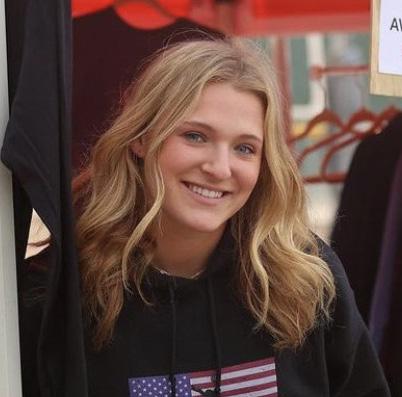
Fitzgerald first joined Venture Devils, a program that helps anyone in the AS U community along their entrepreneurial journey, at the st art of her sophomore year in 2021. From there, she launched VB America, the volleyball brand she dreamt of as a teenager, soon printing her first several clothing designs with the help of her father.
As a member of Sun Devil Athletics’ name, image, and likeness subcommittee, an AS U graduate, and an entrepreneur himself, Kunowski became a trusted resource for Fitzgerald and guided her through early st ages of business development.
“[Kunowski] just wants to help everyone succeed,” s ays Fitzgerald. “He is all-in, and if you’re willing to put in the work and work with him, he is all-in to help you, and he’s so excited about everything. Not only that, but he went through it ”
After winning $5,000 and bet a-testing opportunities with S DA at the second annual S DA Venture Challenge in 2022, Fitzgerald hopes to use the rest of the year to negotiate licensing agreements with AS U and other universities. This would allow VB America to incorporate university branding into its clothing designs, which are printed onto t-shirts, sweatshirts, t ank tops and more. From there, Fitzgerald hopes she can develop a relationship as a supplier for Follett, the education firm that runs many university bookstores around the country
In the meantime, Fitzgerald, an Arizona native, will finish the two remaining years of her biomedical sciences program and apply for nursing school, all while continuing to chase down a Pac-12 championship in beach volleyball for AS U.
“You’re a student, so why not t ake the risk while you’re still in school?” she s ays. “I still have a degree I’m getting, so why not t ake the risk and go for it?”
A symbol of what’s achievable for student-athletes at AS U who think creatively and use the resources available at places like GS I, Fitzgerald expects VB America to be part of her life for the foreseeable future. The business is not slowing down, and she doesn’t expect to, either
“The biggest thing I’ve learned is you will have a set idea, then it will go in a million different directions, and you’ve got to just go with it,” she s ays. “This isn’t just something I just want to do for the next two years at school. I want to t ake this and turn it into the biggest volleyball brand that I can ”

 Photo courtesy of Kate Fitzgerald
Photo courtesy of Kate Fitzgerald

“Is
Launched in 2016, the United Nation Sports for Climate Action Framework released updated t argets in November 2021 that matched other dire reports of significant impact from climate change in the coming years. The group aims to use sports “as a unifying tool to federate and create solidarity among global citizens for climate action.” As part of its larger mission to use sport to improve the world and to ensure everyone has access to sport, the Global Sport Institute is determined to press forward to support sust ainable practices in sport.
During Earth Week the spring of 2022, G S I hosted an event entitled “New Dark Horse in the Climate Game” at Arizona St ate University’s new Rob and Melani Walton Center for Planet ary Health that sought to uncover whether sport could be a driving force in developing sust ainable practices in business and throughout communities. Industry leaders from Austin Football Club, the Atlant a Hawks and the Green Sports Alliance joined GS I for the panel alongside GS I Postdoctoral Research Scholar Stephanie Gerretsen, PhD, Global Sport Scholar Jennifer Vanos, PhD, and AS U Global Institute of Sust ainability Professor of Practice George B asile.
“A lot of people think it’s just about cut ting emissions or recycling, but there’s so much more to it in terms of being able to maintain or sustain the long-term abilit y of athletes to do what they do and of fans to get the experiences they get .
Jennifer Vanos, PhD, Associate Professor at the ASU School of Sustainabilit y and Global Spor t ScholarThe group also convened after the event for a podcast convers ation, with Green Sports Alliance Executive Director Roger McClendon noting, “If you don’t want to be left behind, you don’t want to become one of those dinos aur companies or businesses, you have to pay attention to what’s happening ”
Sust ainability is undoubtedly an integral part of business planning heading into the 2020s, and the sport industry is no exception. As an organization that continually seeks to lead discourse around the intersections of sport and critical global issues, GS I conducted a poll in June 2022 that explored public opinion across several large American cities regarding st adium construction and community impact. The poll found a majority support for tying sust ainability st andards, clawback provisions and provisions for affordable housing into public funding for st adiums.
Throughout the spring, GS I also published two digit al issues connected to sust ainability and community development in Global Sport Matters. Gerretsen wrote extensively on urban development in the U.S. and Kenya and the role sport can play in facilit ating economic and social growth in cities and communities.
Of course, sport must also face the consequences of environment al change that can already be seen around the world. Those who are historically marginalized will disproportionately be affected. In April, Vanos wrote a Global Sport Matters article based on her GS I-funded research into the effects of heat and pollution on athletes in which she st ated, “As we strive for equity in historically dis advant aged populations, we must face a hard truth: Many youth athletes exercise in dirty air and dangerously hot environments because of where they live and go to school, thus inhibiting or even preventing s afe participation and future athletic success ”
It is fundament al to the vision of GS I that everyone can participate in sport, and that sport can be used to improve lives and societies. So not only must sport continue to lead a move toward a future that values the health of the planet and its people, but it is also clear that sport organizations like GS I must seek solutions that prioritize access to exercise, play, and teamwork for all people.
As a $620 billion industry, sport is uniquely positioned to leverage its platform to bring awareness to climate issues and set st andards that s afeguard the environment and protect people. We see the intersection of sport and sust ainability in efforts like Climate Pledge Arena in Seattle, an NH L and WN BA facility aiming for netzero carbon emissions, and the Union of European Football Associations’ pledge to achieve zero emissions by 20 4 0. As climate change becomes a greater priority worldwide, the Global Sport Institute will continue to bridge research, innovation and learning to help make sport a guiding light toward a more sust ainable future.
Sport is a large-scale global pursuit that brings together people and places, often creating deep roots with the environment in which it is played. As a result, sport both contributes to ecological change and is affected by it.
As efforts intensify to address decades of carbon emission, commercial growth, and environment al deterioration, sport can t ake the lead in championing progress. If current trends continue, however, sport could face some of the more serious consequences of a changing Earth.
On this special episode of Global Sport Matter Podcast, Stephanie Gerretsen, PhD of the Global Sport Institute speaks with Roger McClendon, Executive Director of the Green Sports Alliance, Sofi Armenakian, Director of Operations and Sust ainability at the Atlant a Hawks and St ate Farm Arena, and Jordan Enke, Senior Vice President of St adium Operations at Austin F.C. The panel discusses how sport is setting its own path within the sust ainability industry for others to follow Listen to the podc ast at bit.ly/thegsmpod.
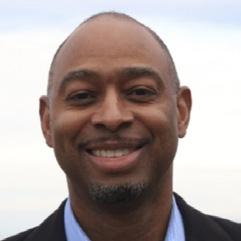
“So if you don’t want to be left behind, you don’t want to become one of those dinosaur companies or businesses, you have to pay attention to what’s happening.”




Over the past two years of shutdowns and isolation, many people around the world found refuge outdoors, often becoming first-time trekkers. With that arose a problem that Charlotte B owens, an administrative director at the Center for Bio-mediated and Bioinspired Geotechnics at AS U, wanted to help solve.
For bigger-bodied people who may naturally not fit into the clothing and gear of popular brands or who are suffering from health problems and want to use the natural environment to get into good physical shape, B owens created Conscious Gear, a merchandiser of outdoors items that seeks to center bigger-bodied people in the design process. B owens, who in the mid-2010s struggled through a diabetes diagnosis and the fallout from it, underst ands firsthand how hard it can be to find the right things to wear or use while hiking, running and walking.
After completing a 15-mile ultramarathon less than a year after the diagnosis, B owens found herself frustrated. “It was bittersweet, because I had just done 15 miles, but I struggled to find outdoor gear,” she s aid. “For years, my friends told me to st art a business and I s aid, ‘no, that’s not what I’m doing. Someone else better figure this out!’”
But once the C OVI D-19 pandemic hit, B owens had the extra time and energy to put into her st artup and took matters into her own hands. As with any new firm, Conscious Gear faced challenges. B owens struggled to find manufacturers, and with a full-time job on top of being an entrepreneur, time was hard to come by. And of course, the company needed money to grow. In the fall of 2021, B owens competed at the Global Sport Venture Challenge after joining Venture Devils a few months prior and won $10,000.
That reinvigorated B owens and inspired her to keep going. From there, she applied and was accepted into R E I’s Embark program for founders of Color across the outdoors industry
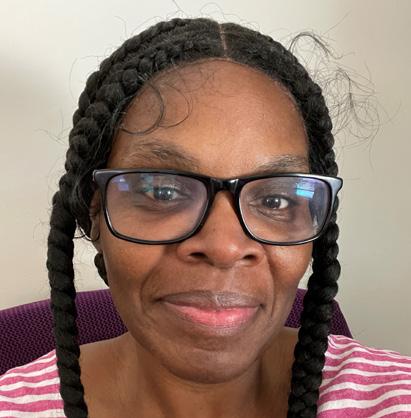
The 12-week virtual program provided another $10,000 and education sessions that centered on business basics in the outdoor industry as well as networking and mentorship opportunities from RE I executives and other industry leaders. After B owens completed the program, RE I invited her as a represent ative on a panel at Outdoor Ret ailer, an industry convention held in Denver in June 2022.
Now, B owens is working with a Phoenix-based manufacturer to develop a hydration vest designed for bigger-bodied hikers, runners and walkers. She aims to produce an initial production run of 2003 00 before eventually developing a supply chain that will allow Conscious Gear to begin negotiating a purchase order from the likes of RE I or Dick’s Sporting Goods, both of which she was able to get in touch with through the Embark program.
“I never thought I would be in this moment, but I do love the beauty of being in this moment, because I do get to do something special for the world,” she s aid. “For all those folks like me who s at around for decades, then decided to go outside and found healing and health and wellness, I want them to know that, too. I don’t want them to be discouraged by the lack of gear, the lack of outerwear, to support the change that they’re going to make


 Photos courtesy of Charlotte B owens
Photos courtesy of Charlotte B owens
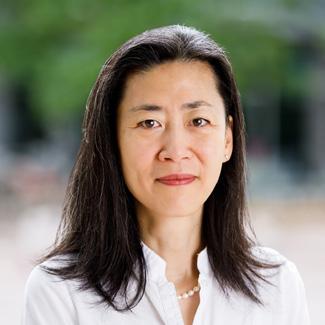
Since our inception, the J. Orin Edson Entrepreneurship + Innovation Institute at AS U has partnered with us to support ventures that provide new solutions in the world of sport. Together, we give those enrolled in the Venture Devils program the opportunity to earn funding for ideas that can impact sport in a positive way. We jointly seek out partners like R /GA Ventures, the Singleton Foundation for Financial Literacy and Entrepreneurship, and local sports franchises to expand our programming even further. This partnership has enabled us to provide resources and education to early st artups, our previously funded ventures, and AS U athletes and st aff.
“I’ve appreciated the collaboration with the Global Sport Institute even more than ever this past year. As we’ve continued to collaborate to support scholar-athlete-entrepreneurs navigating through the pandemic, the changes due to the N CAA name, image and likeness policies, and re-centering support for entrepreneurs, educators, students from middle school to post-college and even post-professional journeys, we’ve rededicated ourselves to making entrepreneurship accessible and the power it may enable for self-determination, greater social impact, and possibilities for economic impact ”
R /GA Ventures launched their Global Sports Venture Studios to bring leading sports organizations to collaborate and engage with the sports innovation ecosystem and bring the future of the fan and athlete experience to life. We have partnered with R / GA at this nexus point to enhance opportunities in the innovation ecosystem and share expertise and resources that benefit sports entrepreneurs everywhere.
“AS U has a very special formula of investing in the student-founder at a fundament al level, and G S I founders that I speak with have a global perspective aligned to localized empathy. Seeing previously seeded founders reinvesting into the entrepreneurial ecosystem is a test ament to the healthy thriving ecosystem at AS U ”
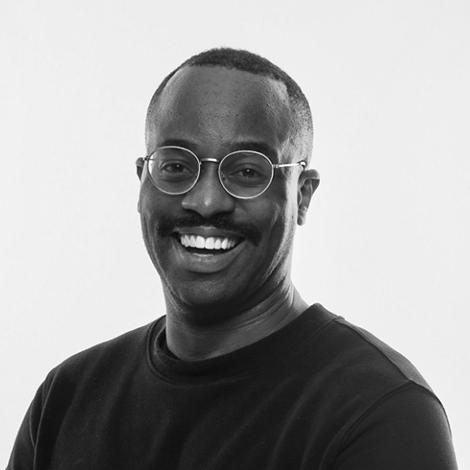 S T E R L I N G D O U G L A S PR O G RAM D IR E C TO R AT R / G A V E N T UR E S
S T E R L I N G D O U G L A S PR O G RAM D IR E C TO R AT R / G A V E N T UR E S
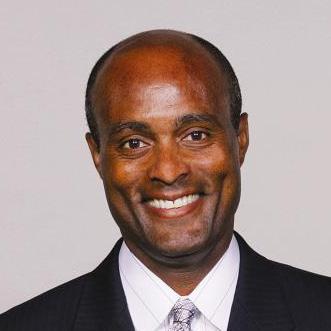
Earlier this year, we partnered with Sun Devil Athletics and J. Orin Edson Entrepreneurship + Innovation Institute at AS U to host the second annual Sun Devil Athletics Venture Challenge. The program provides mentorship, bet a testing, and up to $25,000 in funding to support st artups in the sports industry while keeping Sun Devil Athletics on the cutting edge of new technology. This year, judges were so impressed with the variety of venture pitches, such as digit al apps that address athlete ment al health, monetizing N I L, and a volleyball clothing line, that they increased the funding by an additional $10,000.
“We’re proud to have played a part in the development and growth of three emerging st art-ups thanks to our partnership with the Global Sport Institute and the J. Orin Edson Entrepreneurship + Innovation Institute. As one of the largest universities in the U.S. and a national hub for innovation, we look forward to the expansion of our G S I and Edson E+I partnership to include the use of our facilities as the next generation of great minds explore innovative sport concepts on our campus.”
R SAY A N DER S O N
I C E P R ES I D E N T F O R
Singleton Foundation for Financial Literacy and Entrepreneurship is dedicated to providing financial education to American st artups. We are proud to align with Singleton Foundation to integrate their learning components into our entrepreneurial programming and will continue finding ways to connect together to ensure our current and future ventures can achieve success.

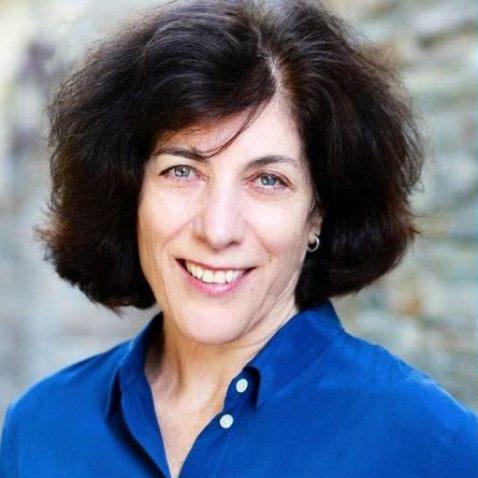
“We have a great partnership with AS U, (and) we hope to reach all students. We are hoping if we can get people’s attention through stories, we can bring them in.”
S H E LLE Y MI L E S CE O O F S I N G L E TO N F O U N D AT I O N2nd Annual Sun Devil Athletics Venture Challenge. Photo by Tim Trumble Photography From left to right: Jean Boyd, Alonzo Jones, Jeff Mindlin, Natasha Adair, Tracy Lea, Jeff Kunowski, Lawrence Guy
Founded by: Cole Brauer, Jude Brauer, Seth Altobelli
Accelerated Cycles makes biking s afer, more accessible and fun so that more people can experience the joy of biking.
Founded by Victor Oc ando
An app to improve the game-day experience for fans with dis abilities.
Founded by: Ricky Johnson
The B arrage Striking Sleeve is a wrap-around for free st anding or hanging punching bags that has LE Ds and pressure sensors embedded within it to indicate where to strike.
Founded by: Christopher Welsh
B aseball Rules Academy is a site where users can look up any rule in baseball, access articles and find other baseball information.
Founded by: Trevor Heder
Billibars makes det achable handlebars that reduce a bike’s width when not in use and creates a unique storage mount to hold the bike.
Founded by Charlotte Bowens
A line of outdoor-activity clothing for larger-sized people.
Founded by: Jeminise Parris
Fair Future Co. is a mobile application that helps students from the Caribbean apply to U.S. universities by matching prospective athletes with interested coaches.
Fanalyze Inc .
Founded by: Juan Juan
Fanalyze is a sports search engine and analysis platform designed to speed up research for fant asy sports and sports betting while providing users with aggregated relevant dat a to help with winning decisions.
Founded by: Bob Merriman
Force Impact Technologies provides wearable mouthguard technology for young athletes, to enhance their performance through better tracking and reporting of head impacts.
Founded by: Pratheek Palanethra
Freebowler is revolutionizing the future of cricket by creating the first nonelectric and port able ball thrower.
Founded by: Rachel Masterson
Futbar is a sports and entert ainment venue that combines the fast-paced game play of 3v3 soccer with food and beverage, video entert ainment and family activities.
Founded by: Nathaniel Fink, Jacob Figueroa
FutureForm manufactures activewear that utilizes nextgeneration materials to bridge the gap between sust ainability, performance and style.
Co-founded by Michael Matus

A new way for influencers, student-athletes, and businesses to communicate, compens ate, and manage brand deals.
Founded by: Danny Harris
GM DY Inc. is a premier real-time consumer and analytics engine that gives athletes the ability to monetize their social capit al and measure their true brand influence.
Founded by: Aleksei Stojanovic
GoSurf is a dat abase, service and review application focused on connecting all resources in the surf industry

Founded by: Domenic Fotino
HAT TAC produces customizable hat racks that can be mounted on walls, helping hats maint ain their shape.
Founded by: Nicholas Hool, John Patterson, Sami Mian Hoolest Performance Technologies develops drug-free technologies for athletes to help reduce stress, anxiety and boost performance.
Founded by: Demetra Mary George
Hourglass Swimwear provides and designs swimwear that focuses on shape to fit every woman’s body.
Founded by: Ceci Shell
Keep the F.A.I.T.H. is a program that teaches life skills to young athletes through a curriculum that can be offered in schools.
Founded by: Kyle Coleman
Liquid Fuel provides healthy sports drinks and hydration beverages for consumers who seek optimal health, performance and energy balance.
Founded by: Tanner Tegtmeyer
Meal Plan Ninja is meal planning software that helps busy people eat healthier in less time. The software generates new meal plans with grocery lists each week that are personalized to an individual’s t astes and diet.
Founded by: Garrett Murphy, Luis Castillo
Murphy Mobility supplies patented technology that helps track exercise performance for patients’ recovery
Founded by: Peter Bugala
The Navajo Mount ain Bike Initiative works closely with members of the Navajo Nation to develop a series of bike trails in their communities, creating opportunities for ecotourism and providing outdoor activities for the children of the community
Founded by: George Sun
Nextiles makes fabric that captures everything related to movement and force.
Founded by: Rob Shepherd, Ilayda Samilgil Organic Robotics Light Lace™ offers biomechanical analysis on the field without any constraints on location or temperature. Using sensors that are soft and stretchable and rely on photonics instead of electronics, Light Lace™ can easily be integrated into garments or shoes to help athletes avoid injuries.
Founded by: Luke Torres
The smallest, most intuitive device that is revolutionizing the way you train, measure progress and enjoy every swim, the Phlex Edge is a premium swimming fitness tracker in a seamless, goggleworn design that features heart rate feedback, stroke analysis and professional workout planning.
Founded by: Miguel Carrillo
Power House Foods serves healthy food options to those active in the gym.
Founded by: Rebecc a Varney
R EV Canvas uses sport and expressive arts to allow athletes to find, believe in and reach their full potential.
Skip NN ’ Hole
Founded by: Jarron Lodge
Skip N N’ Hole is the world’s first floating cornhole game set that combines the fun of stone skipping with the gameplay of cornhole.
Founded by: Luis Castillo
Speedy Castillo produces molded carbon fiber plates designed to att ach to a bike wheel and increase its aerodynamics.
Founded by: Sean Dicke
Strax Gear helps you organize and display your gear, while helping to s ave the environment.
Founded by: Nick Vandam
Streaker is a sports betting platform that uses blockchain technology to validate the results of bets, allowing players to sell their picks.
Founded by: Alex Birks
Best in Class B F R, Made Simple. Port able, gold st andard B F R equipment built for professionals.
Founded by: Abigail Davis
Temp Defender combines wearable technology with athletic equipment to provide innovative, real-time dat a that communicates with the athlete during their performance and its design protects the body, aiding them in sust aining a healthy athletic career.
Founded by: Maya McClendon
A holistic approach aimed at improving athlete ment al wellbeing that provides personalized and adaptive ment al health programming, designed to integrate with all Ment al Healthcare models and is customizable for any sports organization.
Founded by: Andrew Just, Antoine Neidecker

Automatic exercise detection & rep counting enabled using AI and your Apple Watch
Founded by: Tarek Salama, Ryan Brown, Ahmed
Ahmed, Must afa Salih, Devan Shivers
Trestle provides sust ainable and solar-powered sk ateboard racks for campuses that allow students to lock and unlock their sk ateboards with their R F I D-enabled student I Ds.
Founded by: Kate Fitzgerald
A clothing line featuring volleyball designs meant for wearers to sport their passion both on and off the court.
VO2
Founded by: Arham Habib
A digit al platform where athletes can create their own branded social tokens that enhance the fan experience by enabling athletes to engage and monetize their fan base directly.
Founded by: Rayan Vatti
Wager Champs is a risk-free, social and competitive way to experience sports betting.
Founded by: Michael Anthony Wild
Wild Port als creates immersive mobile experiences for entert ainment and sporting events.
Analysis: Brian Flores faces hurdles in N F L c ase but may create transparency in N F L hiring theathletic.com
February 2, 2022
“I have s aid, especially after the last hiring season and in the midst of this one, that it is going to t ake a lawsuit or legislative action to change things,” s aid Kenneth Shropshire, CE O of the Global Sport Institute at Arizona St ate University and an attorney. “I had no optimism about either happening. For the individual who brings the lawsuit, it could potentially be career ending. I also don’t know how you legislate around this.”
Russia Faces Global Sports Crackdown After Invasion of Ukraine nytimes.com
February 28, 2022
“This will continue to be a contest of two different visions of what sport is and who is allowed to participate in and control sport,” s aid Andrés Martinez, a research scholar at Arizona St ate University’s Global Sport Institute. “I think this is a bit of a reset, though, in that it does set an import ant precedent and a st andard that sporting federations cannot continue to act with impunity and just let
the highest bidder dict ate what happens in sport, oblivious to other considerations, including the behavior of those highest bidders ”
White interviewees had 3x better odds of being hired as N F L head coaches, new dat a show miamiherald.com
March 4, 2022
Looking at win-loss record alone can be misleading, s aid Kenneth Shropshire, a consult ant for the N F L and professor at Arizona St ate who heads the Global Sport Institute. Although most coaches are hired to t ake over bad teams, Black coaches often aren’t given enough time to turn things around before they are fired, Shropshire s aid. And sometimes they were fired despite achieving success.
“Look at the success [Flores] had and was about to have,” Shropshire s aid. “He got fired with a winning record. Lovie Smith got fired [from the Chicago Bears] with a winning record.”
Basketball Afric a League’s 2nd Season Begins allafrica.com
March 6, 2022
Scott N. Brooks, PhD, a sociologist and associate director of Arizona
St ate University’s Global Sport Institute, s aid he sees efforts such as the BAL [B asketball Africa League] as a form of cultural diplomacy. “This is a global kind of community when you’re t alking about basketball,” he s aid.
Brooks praised programs such as B asketball Without B orders, the N BA and F I BA’s global community development and outreach program to nurture young players -- not only in the sport but also in academics, health and values.
“It’s not just building athletes, it is building leaders in Africa,” s aid Brooks, who also lauded the BAL’s president, Amadou Gallo Fall, for playing an instrument al role in such development. “His vision is not just that they play basketball,” Brooks s aid, but that “they learn servantship ... and they come back to the continent and help him build it ”
Projected N BA draft picks get ‘Business of Basketball’ course from AS U
bizjournals.com
March 23, 2022
When Shareef Abdur-Rahim, a former N BA player and a longtime friend of Ken Shropshire, the C E O of the Global Sport Institute, took over as president of the G League in 2019, he reached out to Shropshire and asked how they could get more value out of
the deal with AS U. They decided to add an education element to the G League’s Ignite team.
Ignite is a development al basketball team affiliated with the N BA G League. The team is based out of Walnut Creek, California and the team was designed to be a oneyear development program for N BA prospects. The program — an alternative path to the N BA other than playing college ball — st arted in 2020.
In the wake of George Floyd’s murder in 2020, he s aid, there was a national push to retire racist branding. That put a spotlight on the Washington, D.C., football team.
“And that motivated a couple of key sponsors — FedEx and Nike — to s ay, ‘You gott a change the name,’” Shropshire s aid. And the team did, rather than lose those sponsorship deals.
were looking to go to Dak ar this year However, broadly speaking, the YO G has not increased sports participation around the world as much as its creators had hoped.
Cleveland’s baseball team t akes the field as “Guardians” marketplace.org
April 7, 2022
“I think we can s ay conclusively in the end it’s money,” s aid Kenneth Shropshire, C E O of the Global Sport Institute at Arizona St ate University
FiveThirtyEight.com
June 28, 2022
Eric Legg, a professor at Arizona St ate University who studies community sport experiences, told FiveThirtyEight that the event’s postponement will cert ainly be a “big dis appointment” for all athletes who
Without an event in this cycle, the empty space could give sport organizations the chance to look at the overall landscape and make adjustments needed to fill the void more comprehensively to help foster a supportive and robust environment for youth athletes — that is, if those organizations choose to invest the resources. Also, promoting goals and accomplishments that athletes can reach below the YO G will make both the YO G and the Olympics more att ainable and help athletes st ay involved in sports longer, so they aren’t discouraged by not being on the elite athlete pipeline.
A st atistical model run by professor Alexis Piquero from the University of Miami show that fewer Black head coaches were hired since 2015 than would be expected given the pool of candidates. This disparity in expected vs. actual outcomes is st atistically significant, meaning it can’t be explained by random chance.

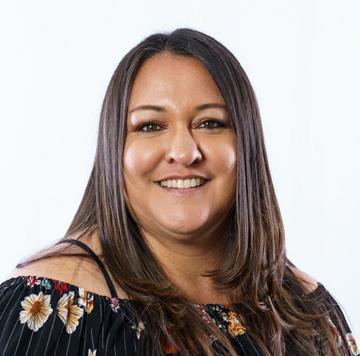
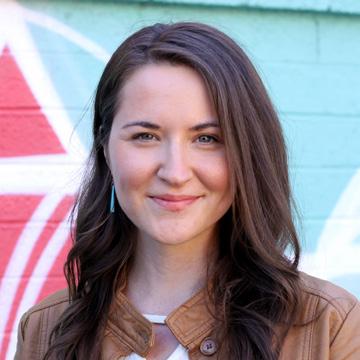
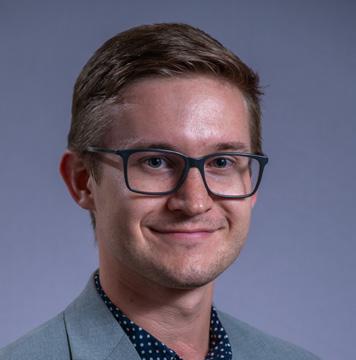
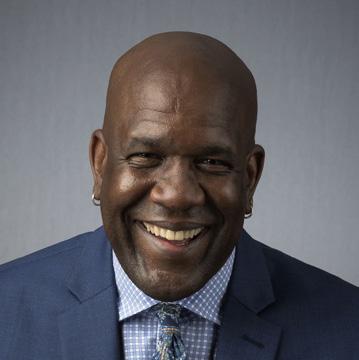
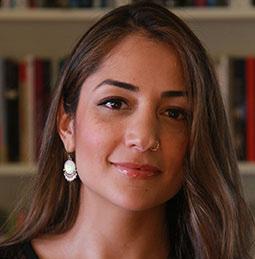
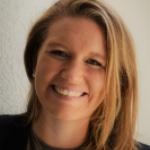
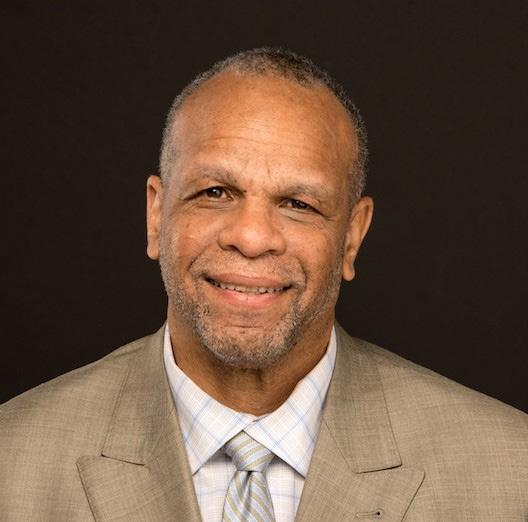
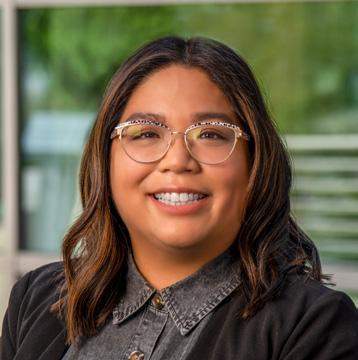
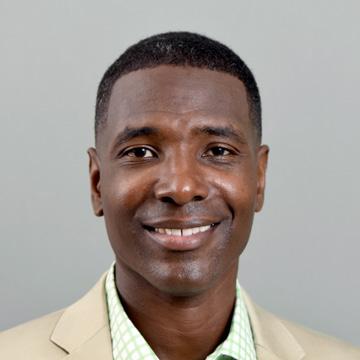
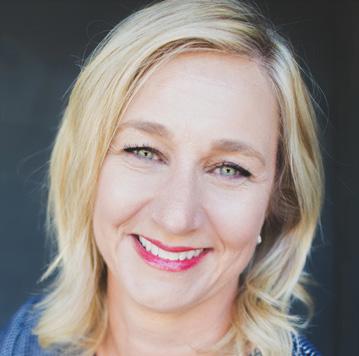
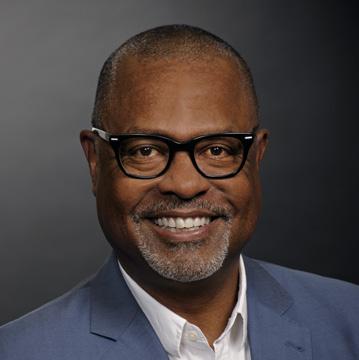
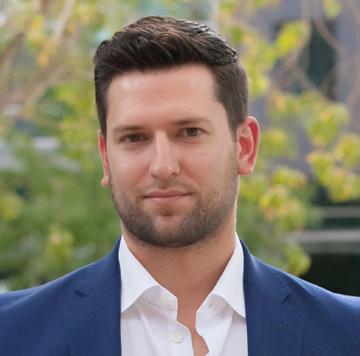
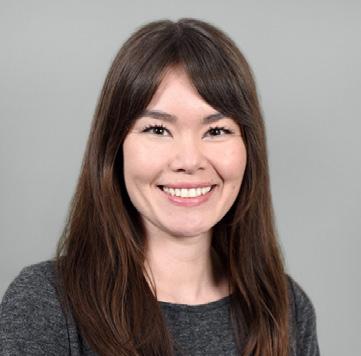
Amanda Andalis graduate service assist ant
Fletcher Archibald research and entrepreneurship programs assist ant
Aidan Corrales marketing and communications assist ant
Rebecc a Falkner graduate service assist ant
Rini Jain research service assist ant
Edward Kole research and entrepreneurship programs assist ant
Andrew Kooreman research and entrepreneurship programs assist ant Gopal Kuppa research service assist ant
Kate Nelson events and programs assist ant
Dominic Ono research service assist ant Luke Padwe digit al communications assist ant
Bidur Pantha research and entrepreneurship programs assist ant
Shelby Permann research service assist ant
Emily Rosenthal research and entrepreneurship programs assist ant
Vikram Reddy Sankepally research and entrepreneurship programs assist ant
Jake Sherr research service assist ant
Nat alie Skigen marketing and communications assist ant
The Global Sport Institute affiliated faculty designation recognizes an interdisciplinary group of AS U professionals who have advanced the study of sport through teaching, conducting original research, publishing in academic journals, presenting at conferences and seminars, or otherwise demonstrating alignment with the institute’s goals.
Christopher Boone, PhD dean
School of Sust ainability, College of Global Futures
Barry Bozeman, PhD
Regents Professor and research director Center for Organization Research and Design, School of Public Affairs
Xiangfan Chen, PhD assist ant professor
The Polytechnic School, one of the Ira A. Fulton Schools of Engineering
Nat alie Diaz
Maxine and Jonathan Marshall Chair in Modern and Contemporary Poetry, associate professor; Department of English director, Center for Imagination in the B orderlands, The College of Liberal Arts and Sciences
Robert Gray, PhD associate professor
The Polytechnic School, one of the Ira A. Fulton Schools of Engineering
Victoria Jackson, PhD clinical assist ant professor
School of Historical, Philosophical and Religious Studies, The College of Liberal Arts and Sciences
Jeffrey W. Kassing, PhD professor
School of Social and Behavioral Sciences, New College of Interdisciplinary Arts and Sciences
Shawn Klein, PhD lecturer
School of Historical, Philosophical and Religious Studies, The College of Liberal Arts and Sciences
Eric Legg, PhD associate professor School of Community Resources and Development, Watts College of Public Service and Community Solutions
Vera Lopez, PhD professor School of Social Transformation, The College of Liberal Arts and Sciences
Joseph Marsit principal lecturer College of Health Solutions
Michael K. McBeath, PhD professor Department of Psychology, The College of Liberal Arts and Sciences
Daniel McIntosh lecturer W.P. Carey School of Business
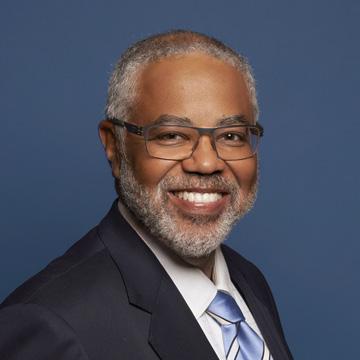
Lindsey Mean, PhD associate professor School of Social and Behavioral Sciences, New College of Interdisciplinary Arts and Sciences
Enrico Minardi, PhD senior lecturer School of International Letters and Cultures, The College of Liberal Arts and Sciences
Michael Mokwa, PhD Pat Tillman Foundation Distinguished professor Department of Marketing, W. P. Carey School of Business
Kelly Nelson, PhD principal lecturer Leadership and Interdisciplinary Studies, College of Integrative Sciences and Arts
Jason Siegler director and associate professor College of Health Solutions
Global Sport Fellows are experts outside of the AS U network who have an official affiliation with the Global Sport Institute. They contribute in multiple ways to enrich the services of the institute including through speaking engagements, teaching and more.
Kenneth Bacon
Co-founder of RailField Partners, this former Fannie May executive vice president is managing partner of this investment company that focuses on high-quality multifamily assets.
Anthony Weems, PhD Weems’ research focuses on the sociocultural aspects of sport, with an emphasis on the politics of diversity and social justice.
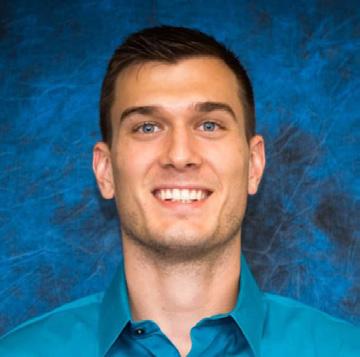
Globally recognized and highly soughtafter speaker, award-winning educator and negotiation expert. Author of Bring Yourself: How to Harness the Power of C onnection to Negotiate Fearlessly
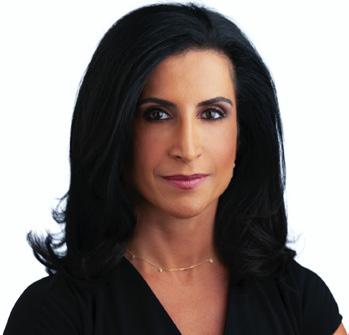
Your investment into the work of the Global Sport Institute is a step toward making a positive impact on the world through sport.
Our research and innovation programs t ackle real problems facing sport, and we address them by working internally and collaborating with experts in the field. You can be a cat alyst for change by supporting seed grants that will allow more issues to be explored or by creating funding tracks that will ignite burgeoning ventures and entrepreneurs who are creating exciting sport solutions.
Amplify the mess age that sport goes beyond the playing field. Through our innovative approach to digit al content, you’ll help us tell import ant stories, encourage dialogue and share information with those who need it the most.
Help support import ant convers ations by underwriting one of our many powerful events held throughout the year. These activities make our research come alive through lived experiences. Or, be an advocate for an athlete’s future as we build pathways toward long-term success. Help us discover the best resources and solutions so we can support athlete empowerment in the post-sport journey.
For more information on how to support the Global Sport Institute, please email GS Idevelopment@asu.edu.

